
|

|

|

|

|

|
| Home | Manuals | Supplies | Search | Consult | Contact | Testing | Service |
|
Themodist Model
|
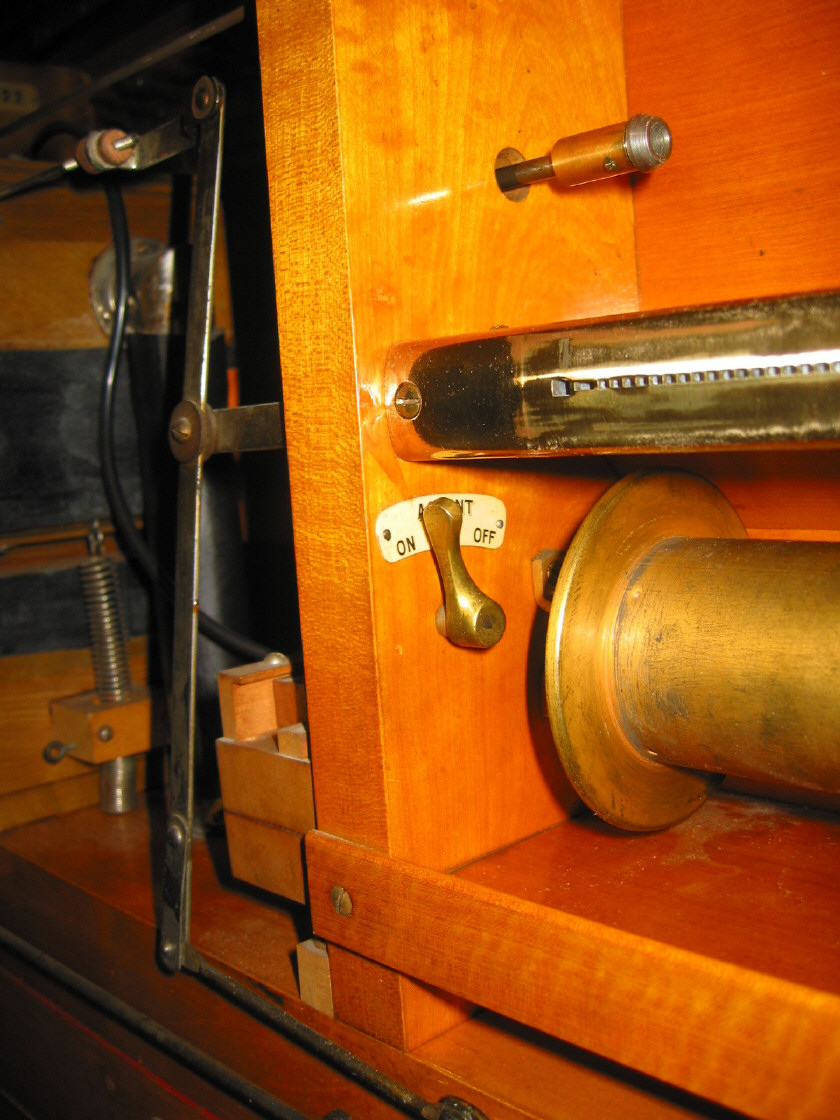
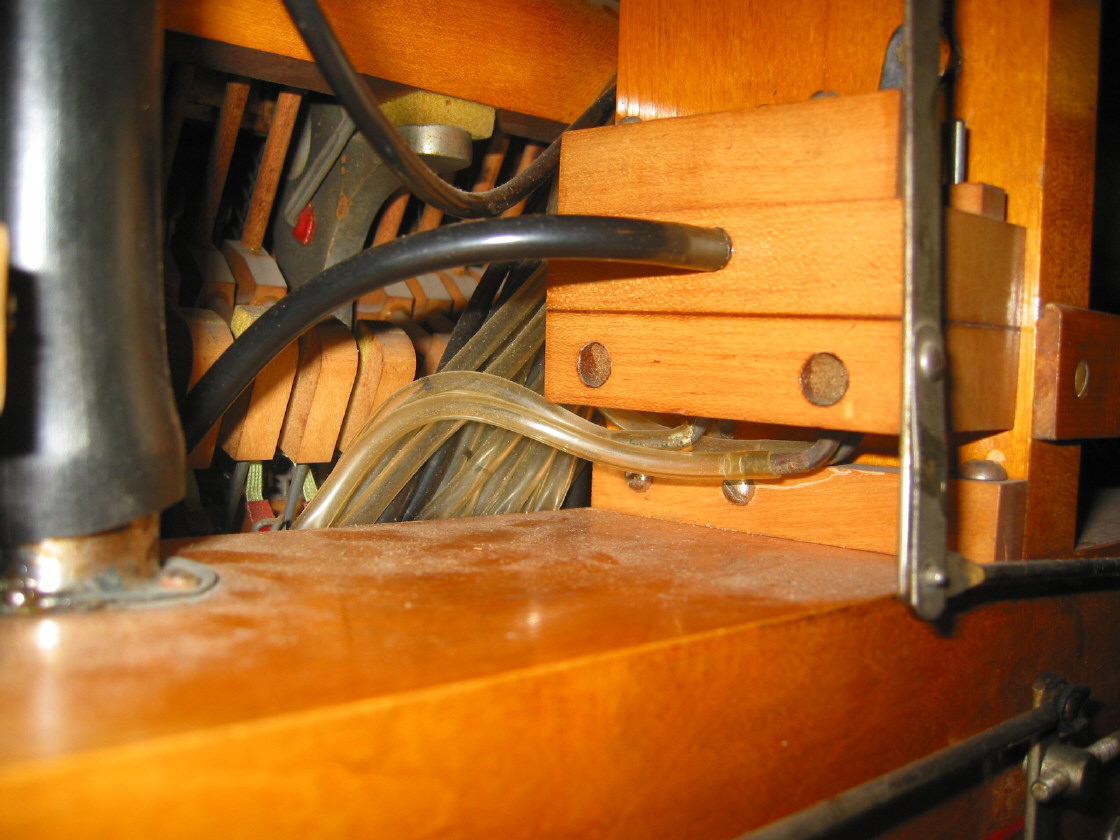
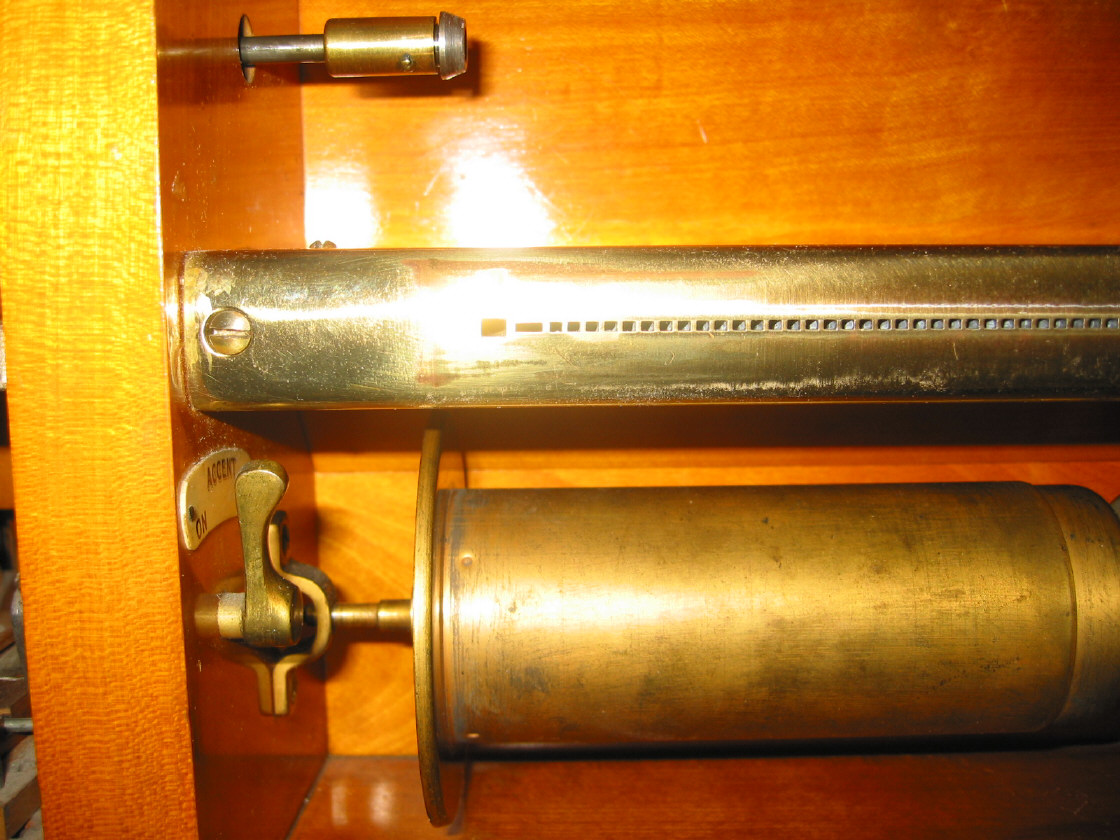
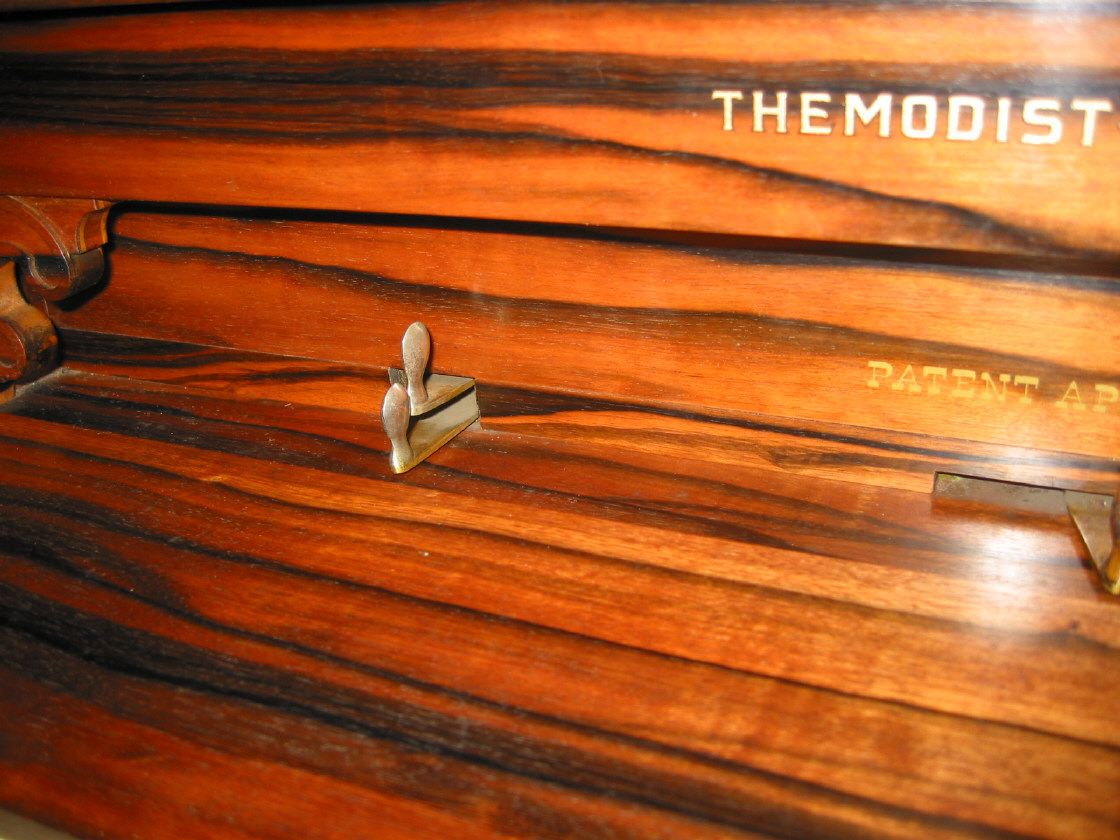
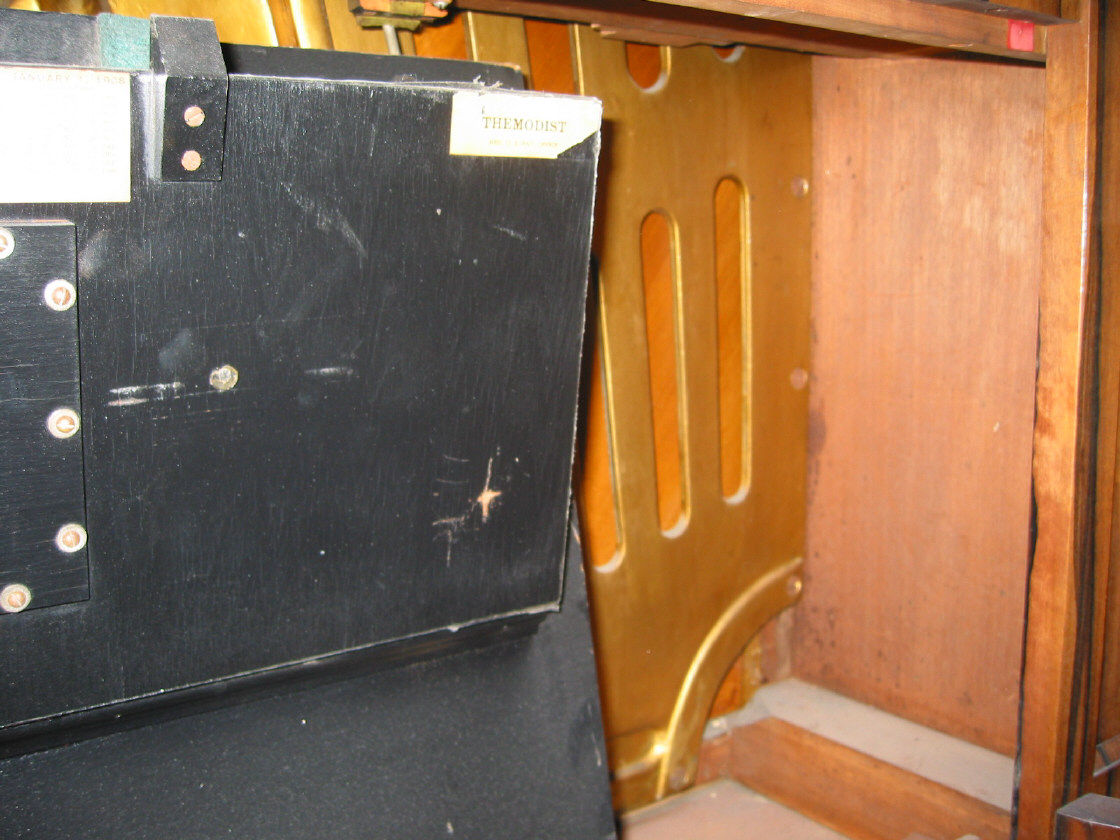
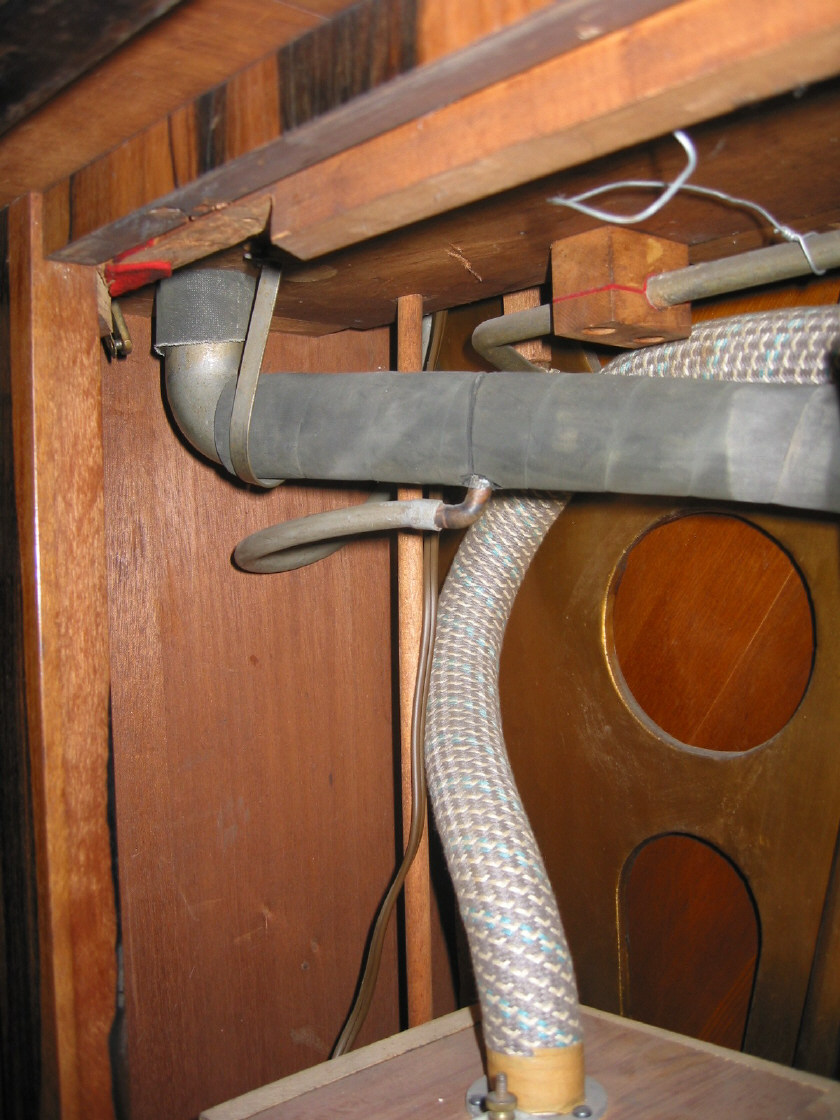
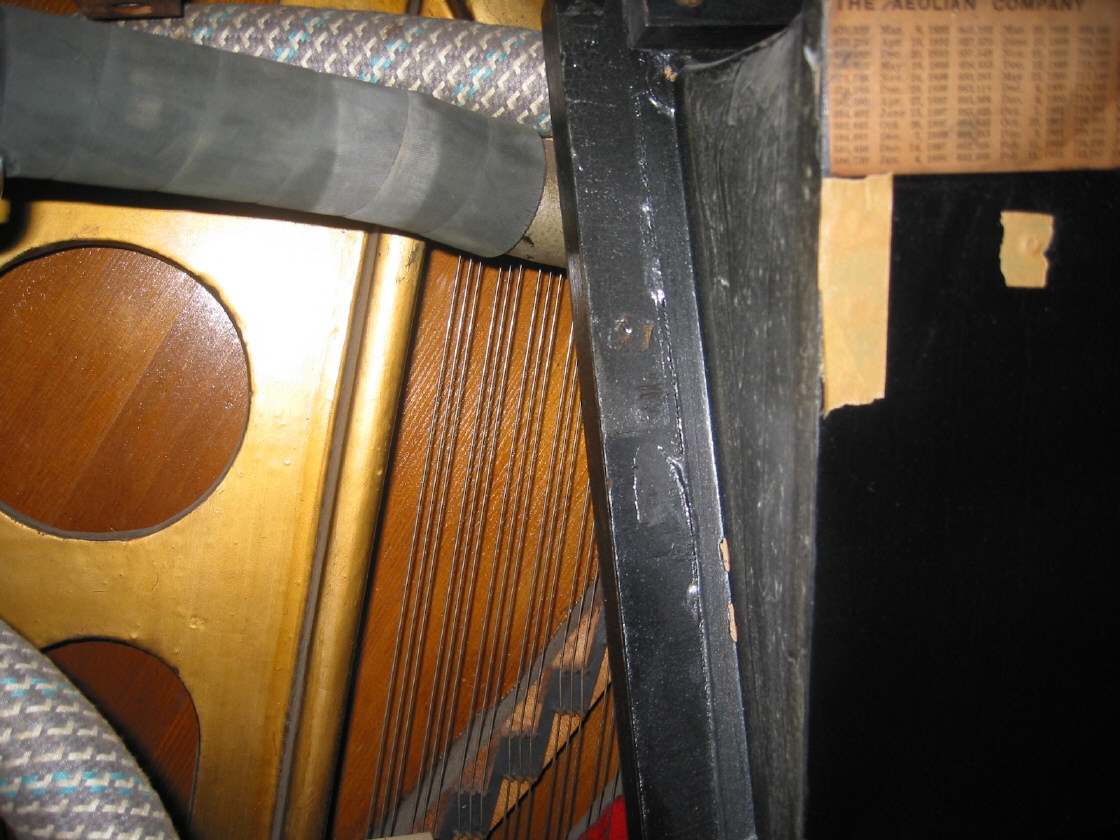
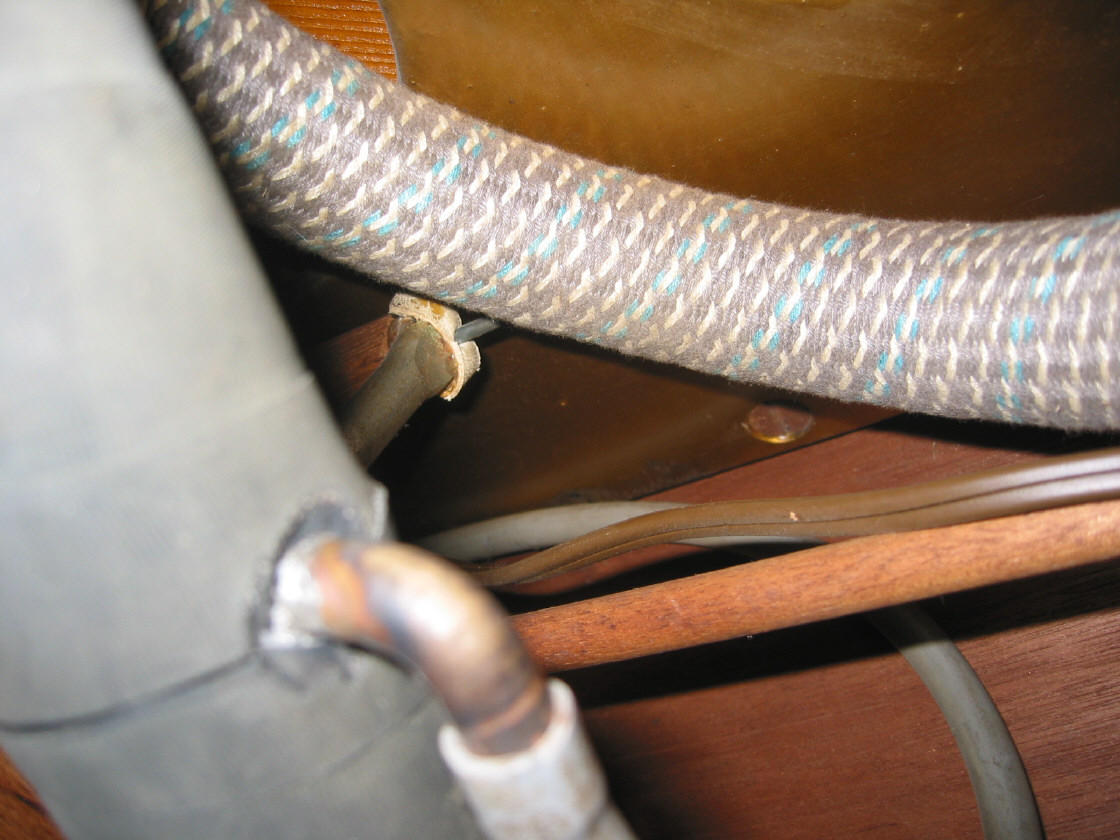
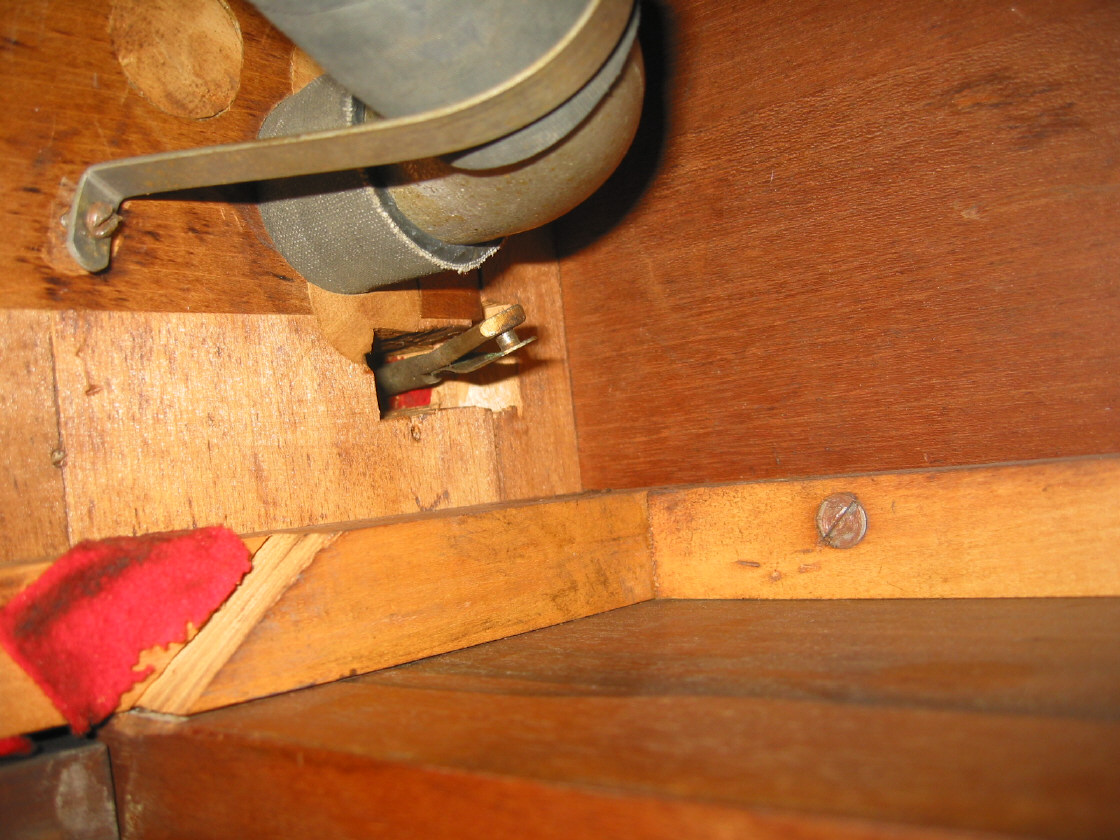
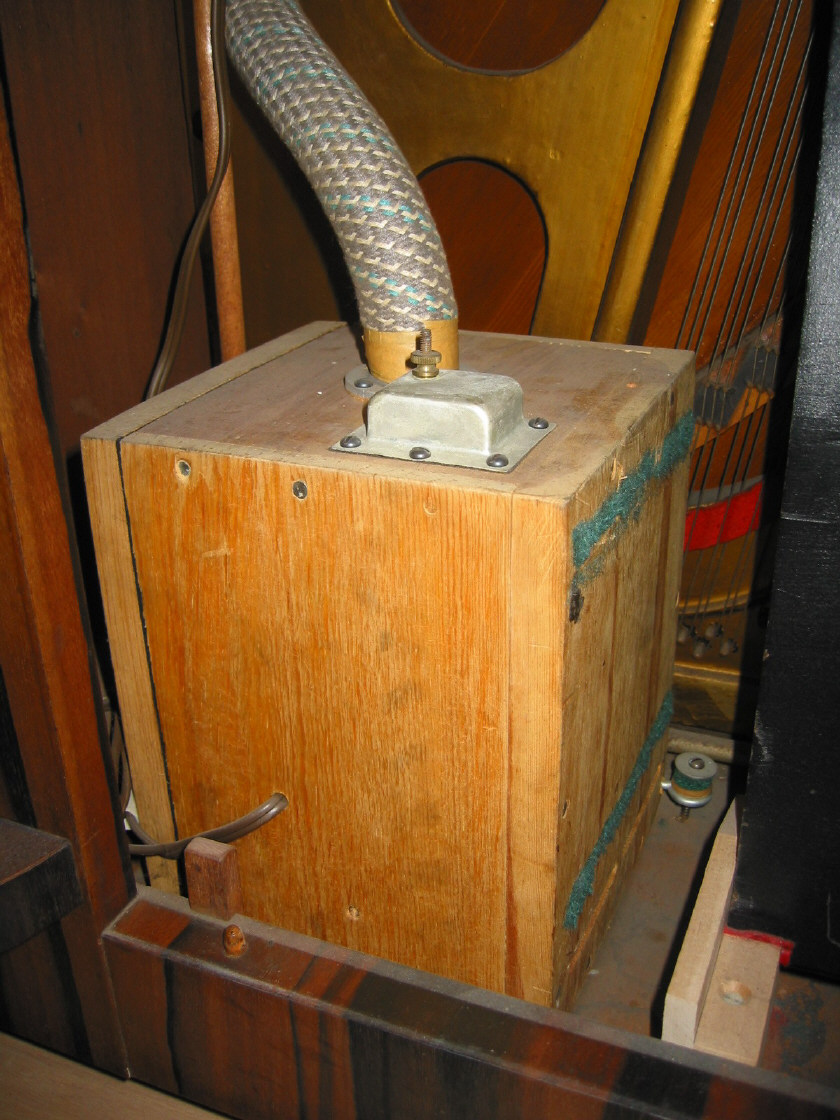
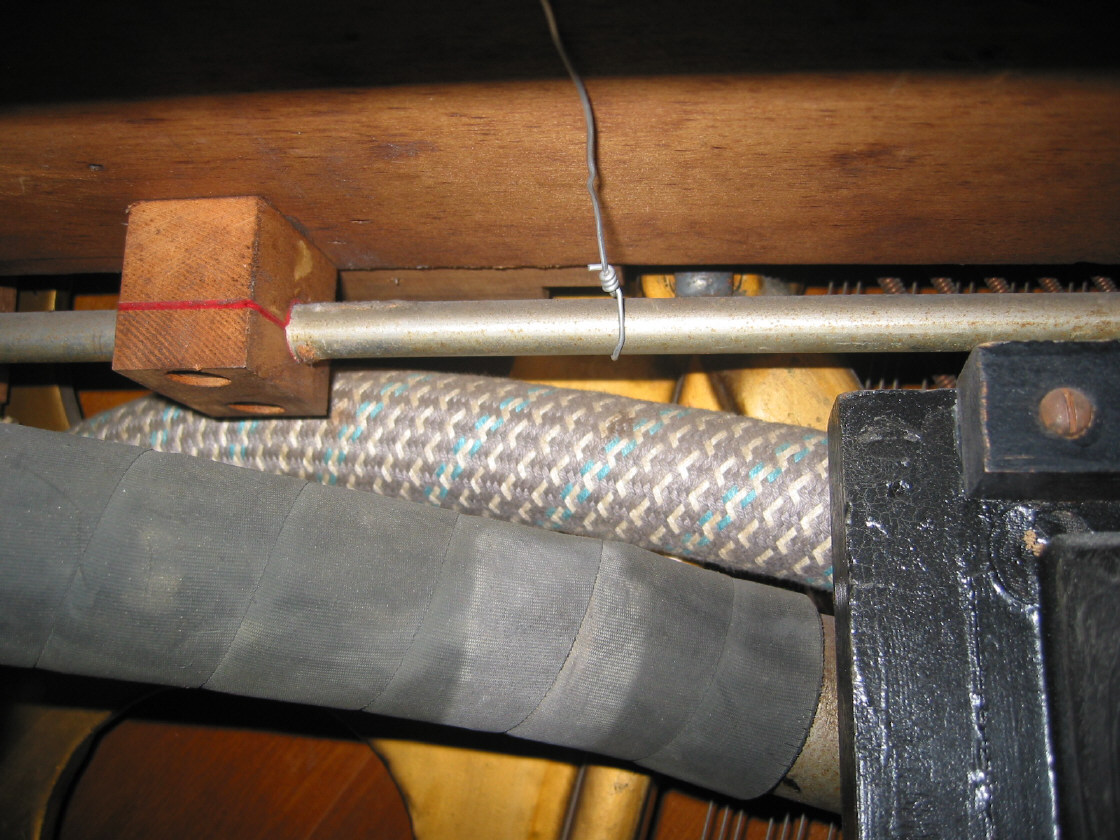
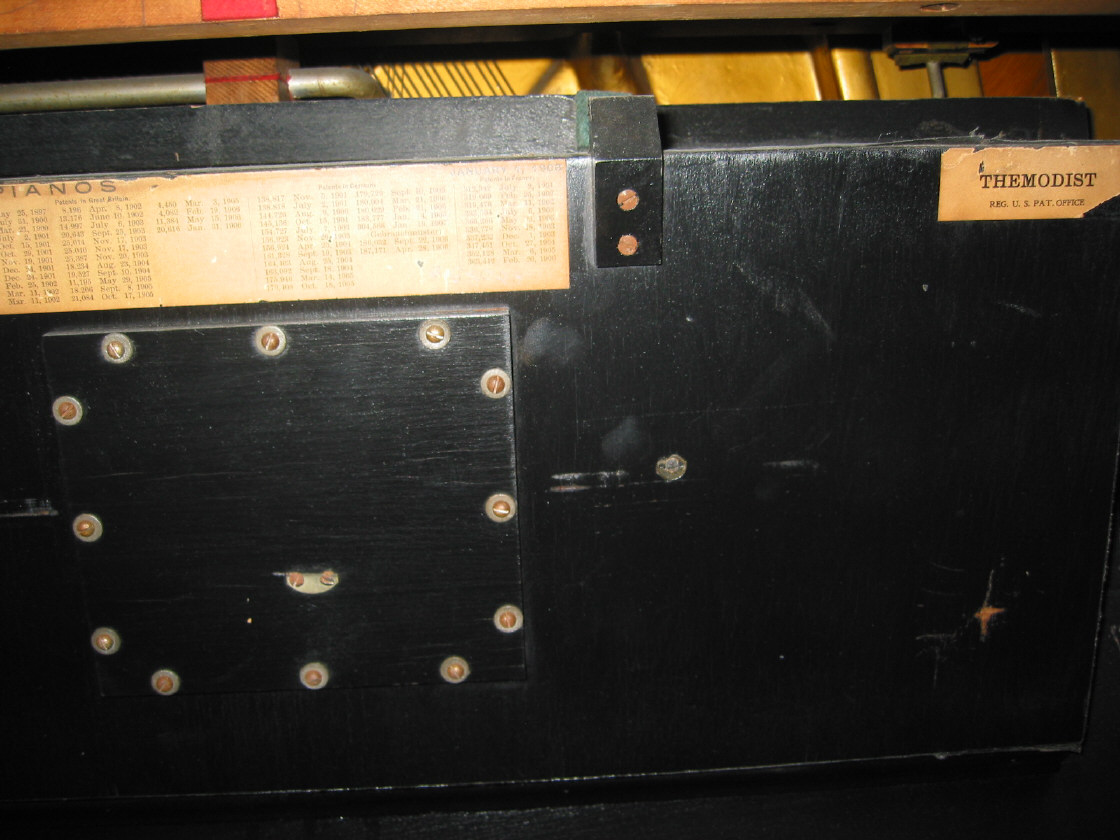
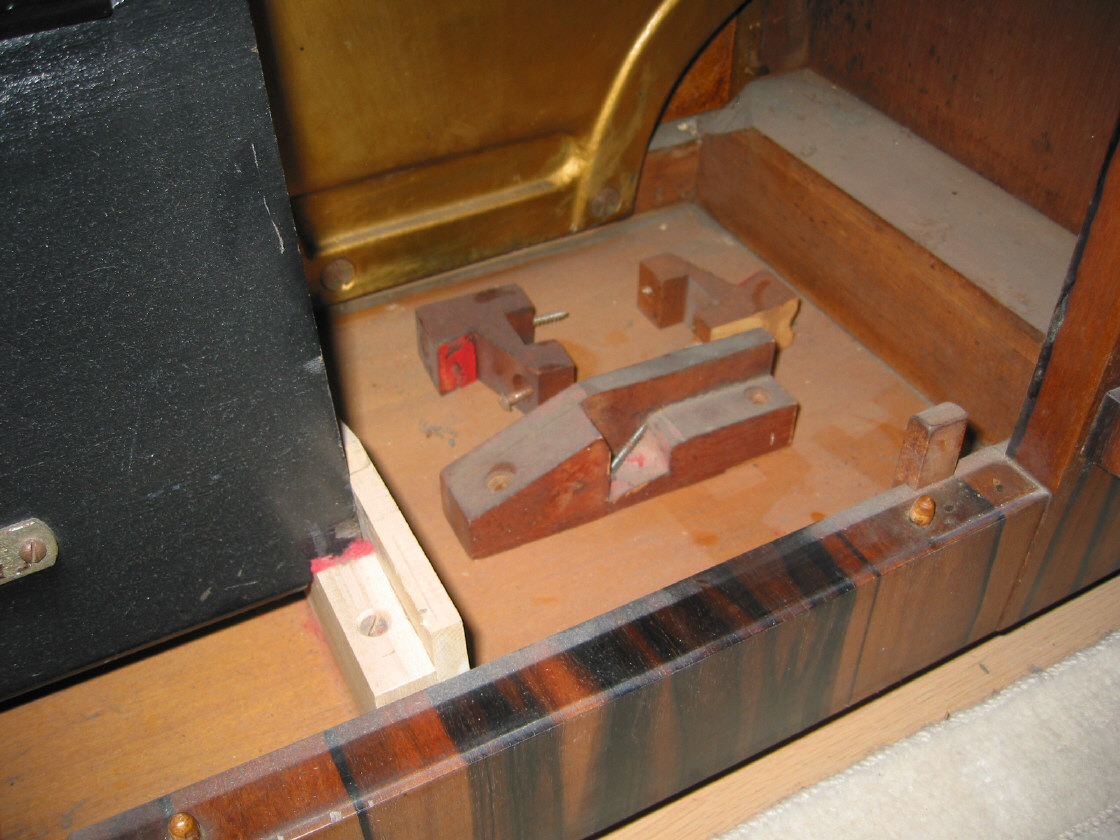
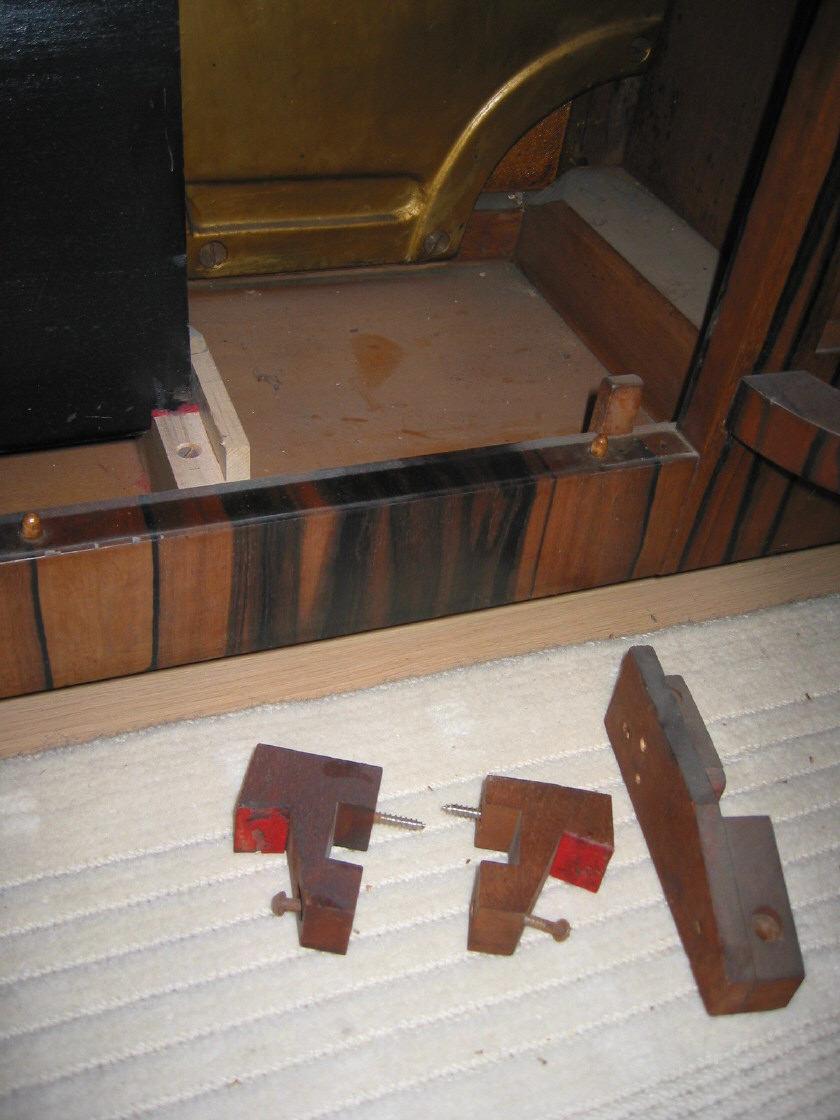
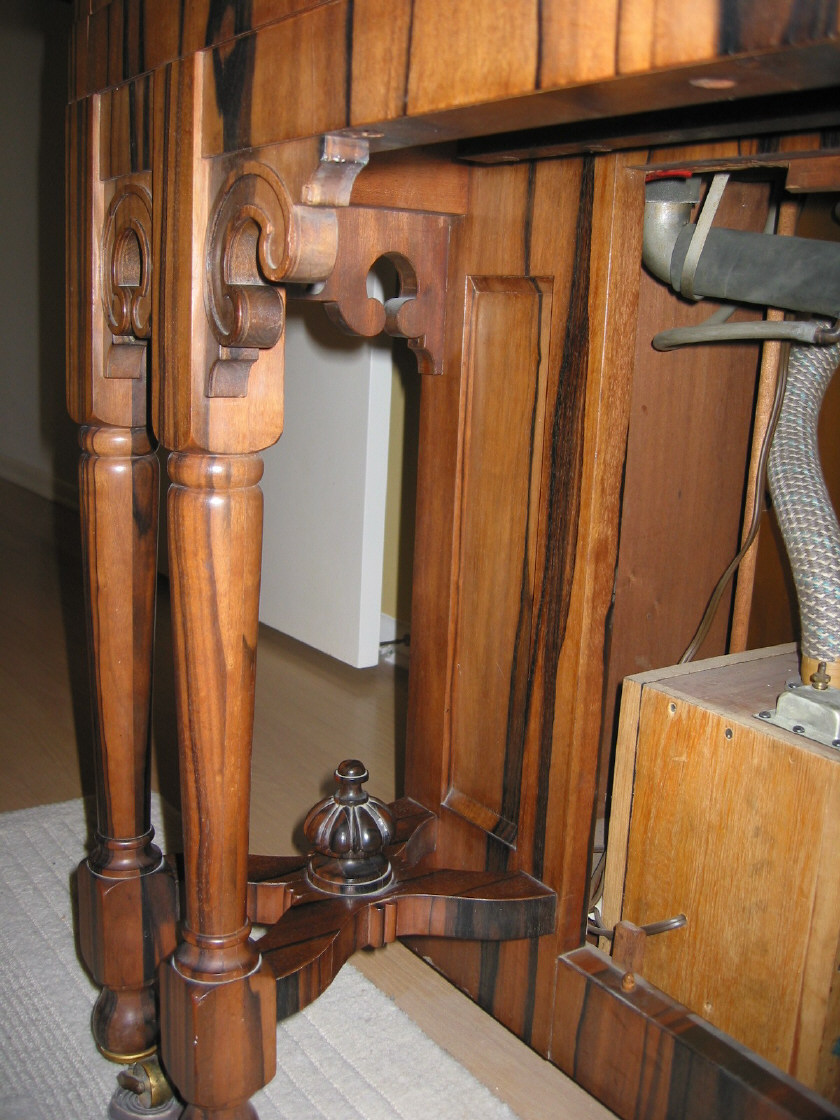
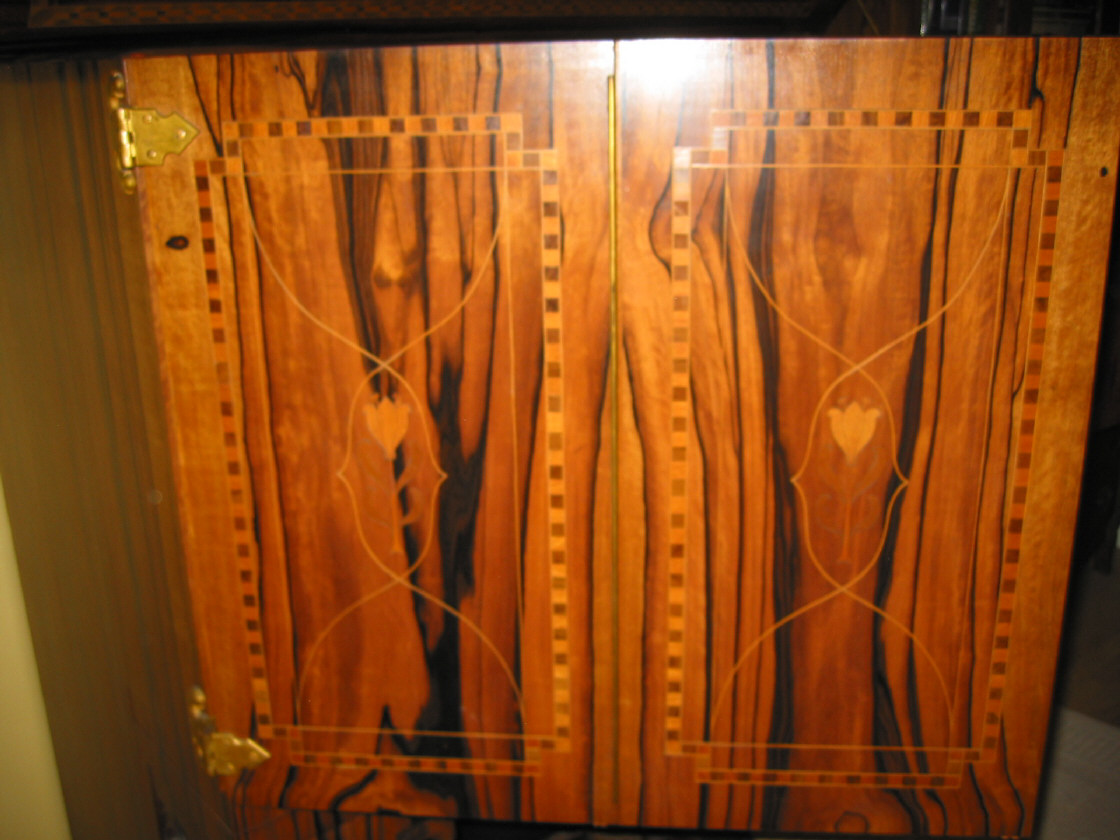
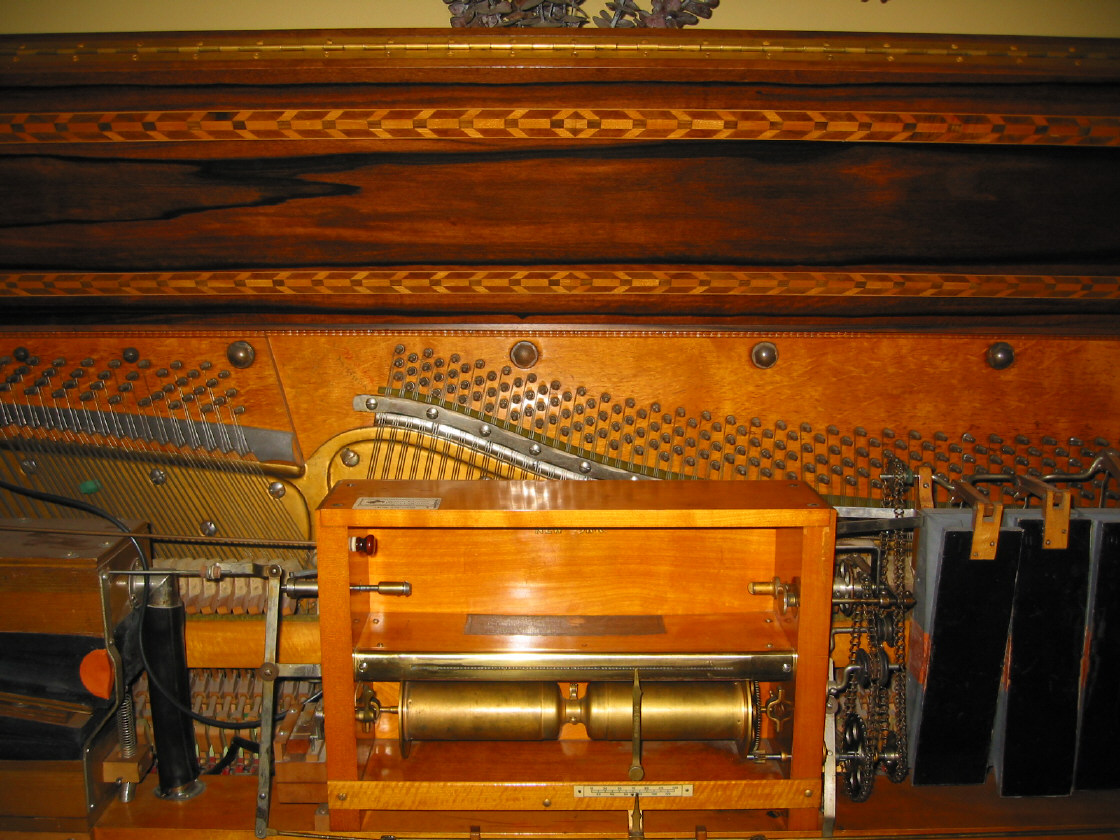
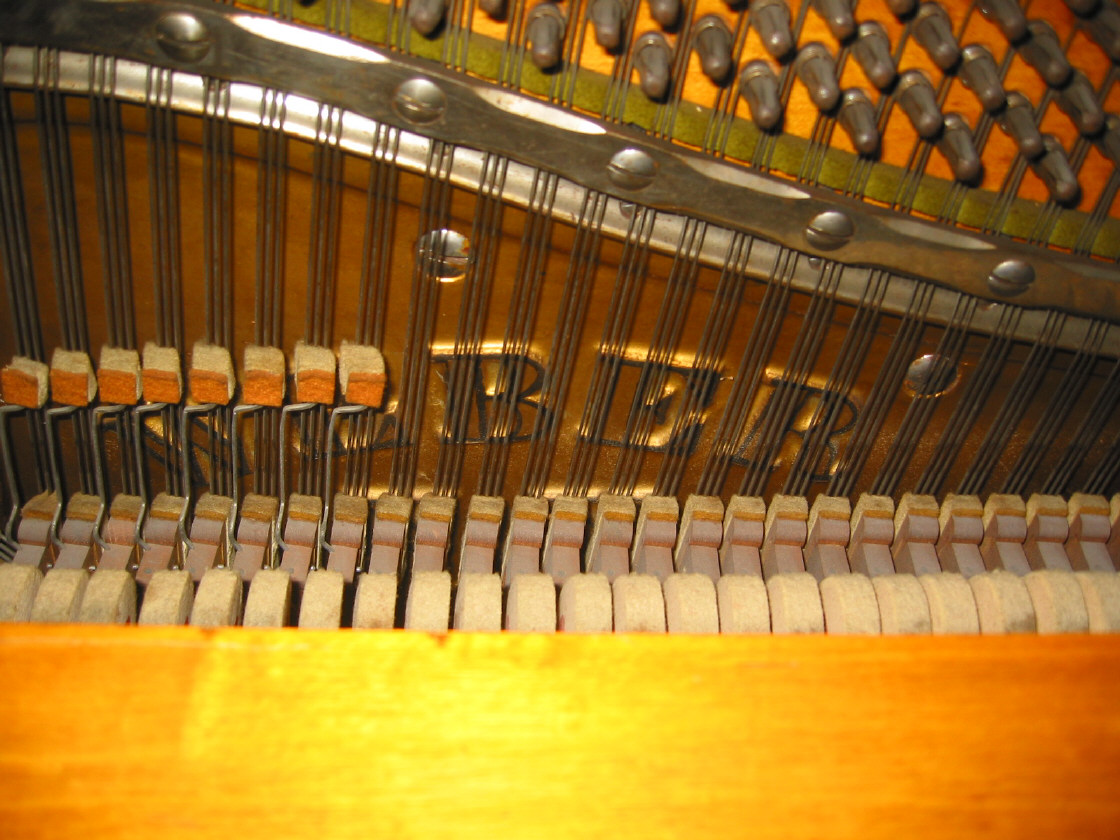
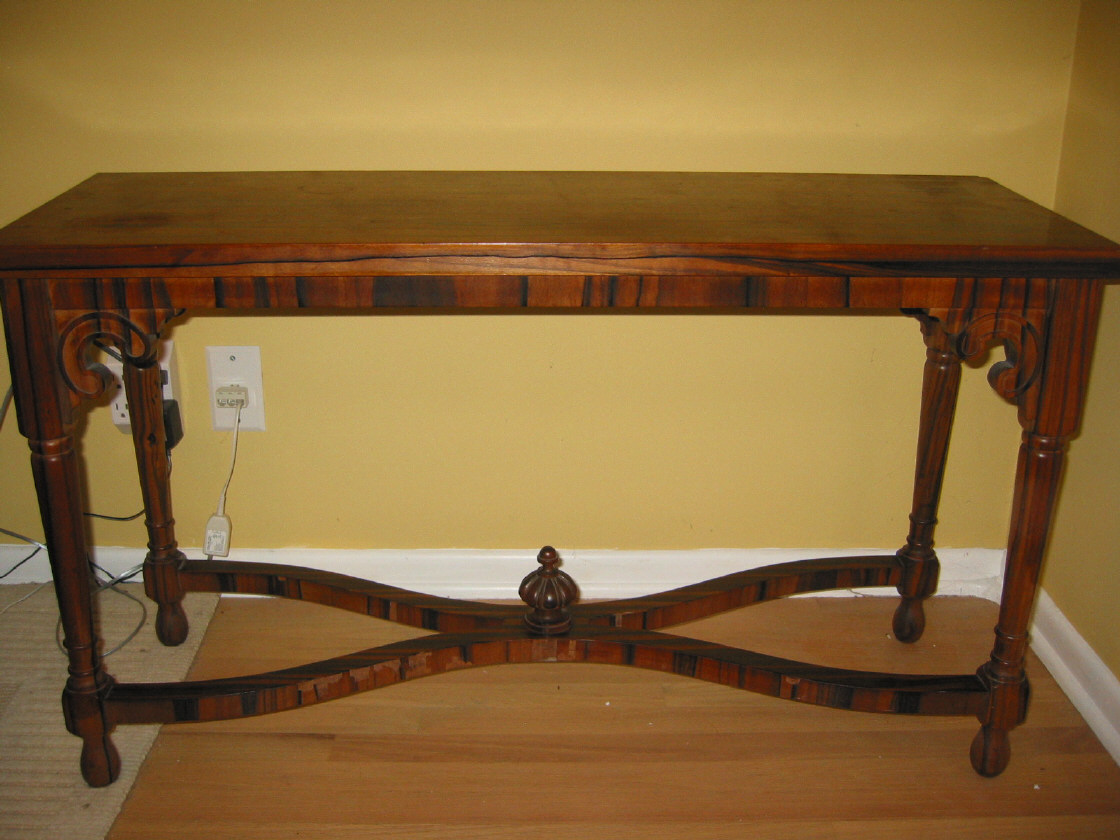
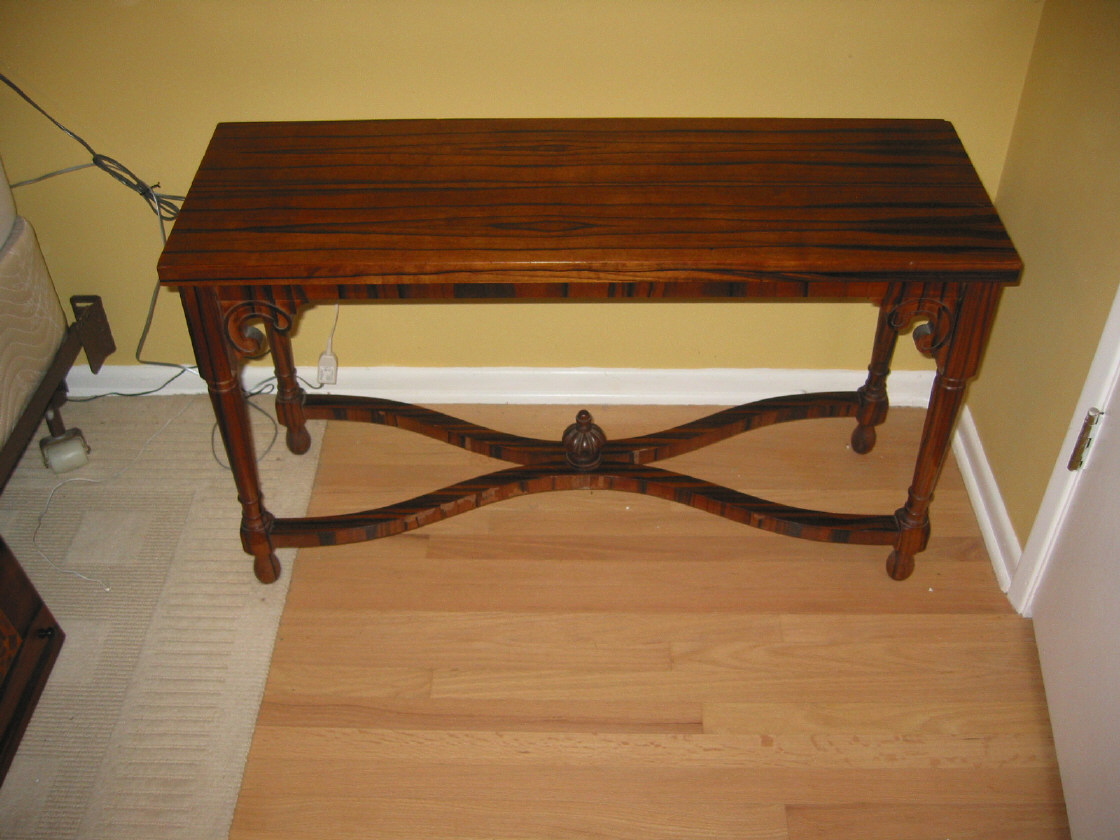
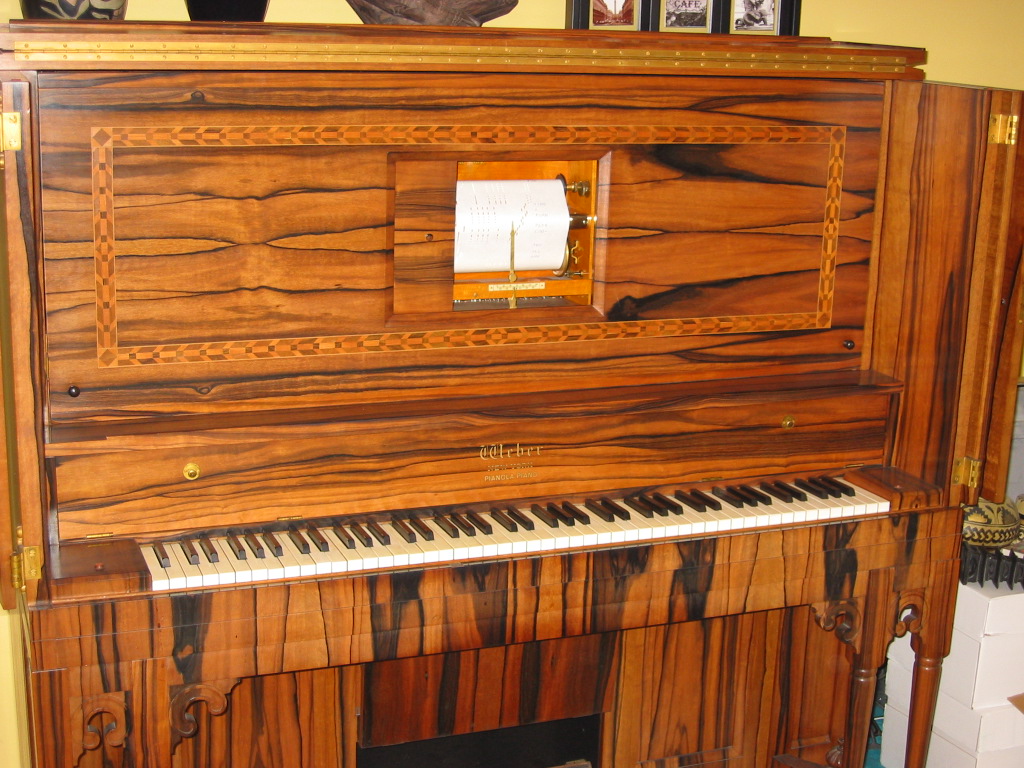
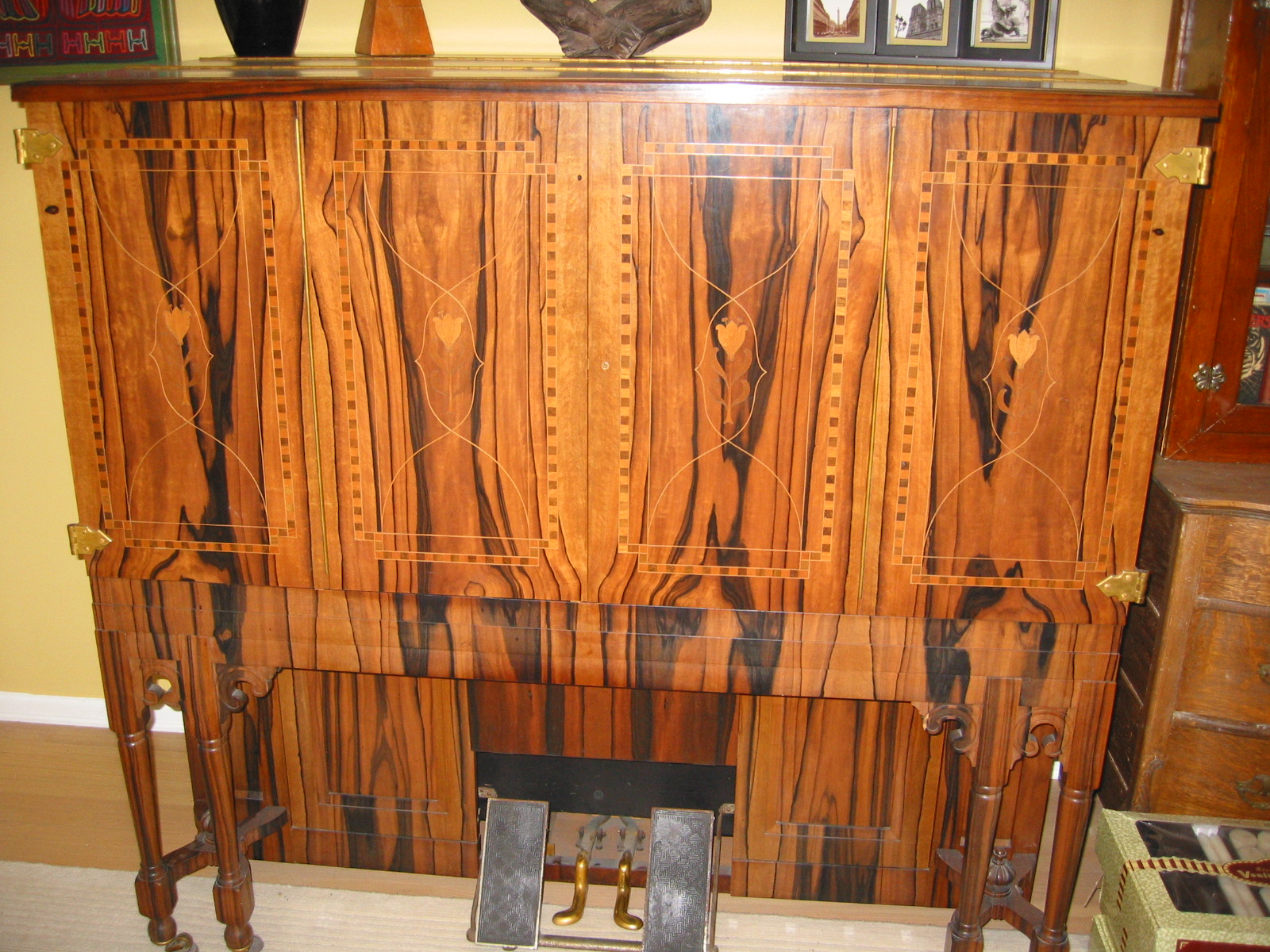
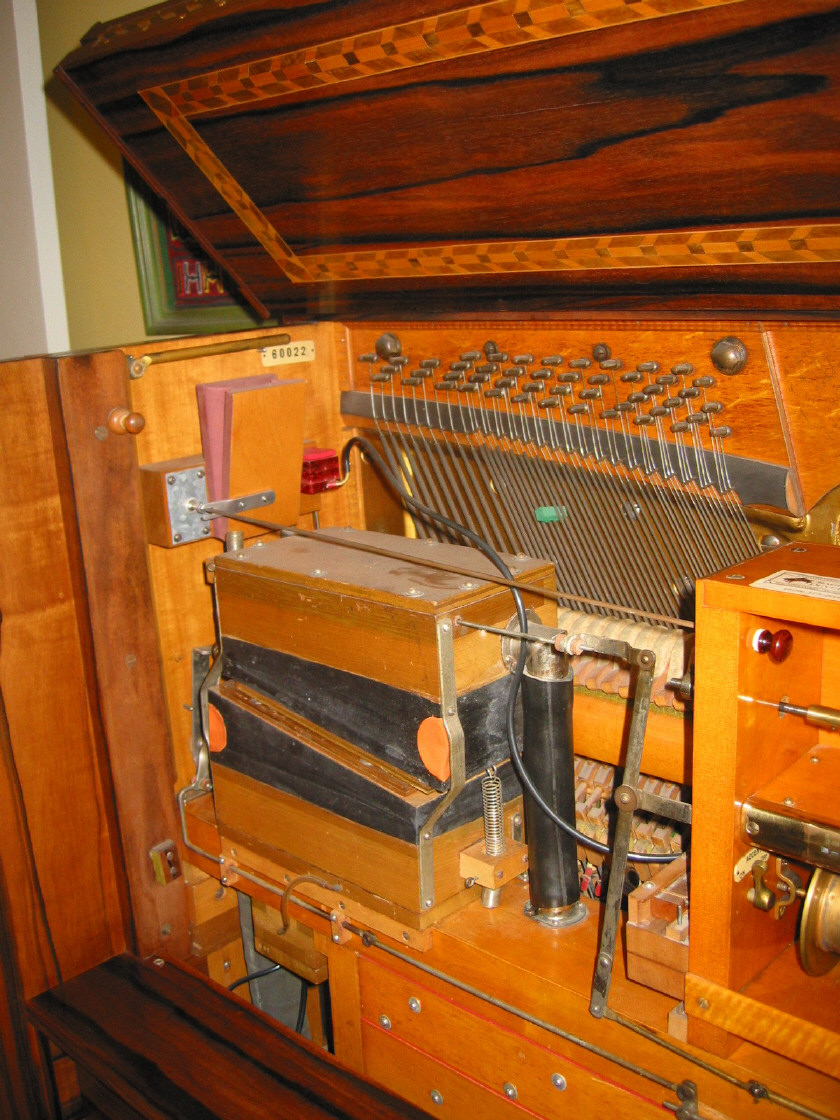
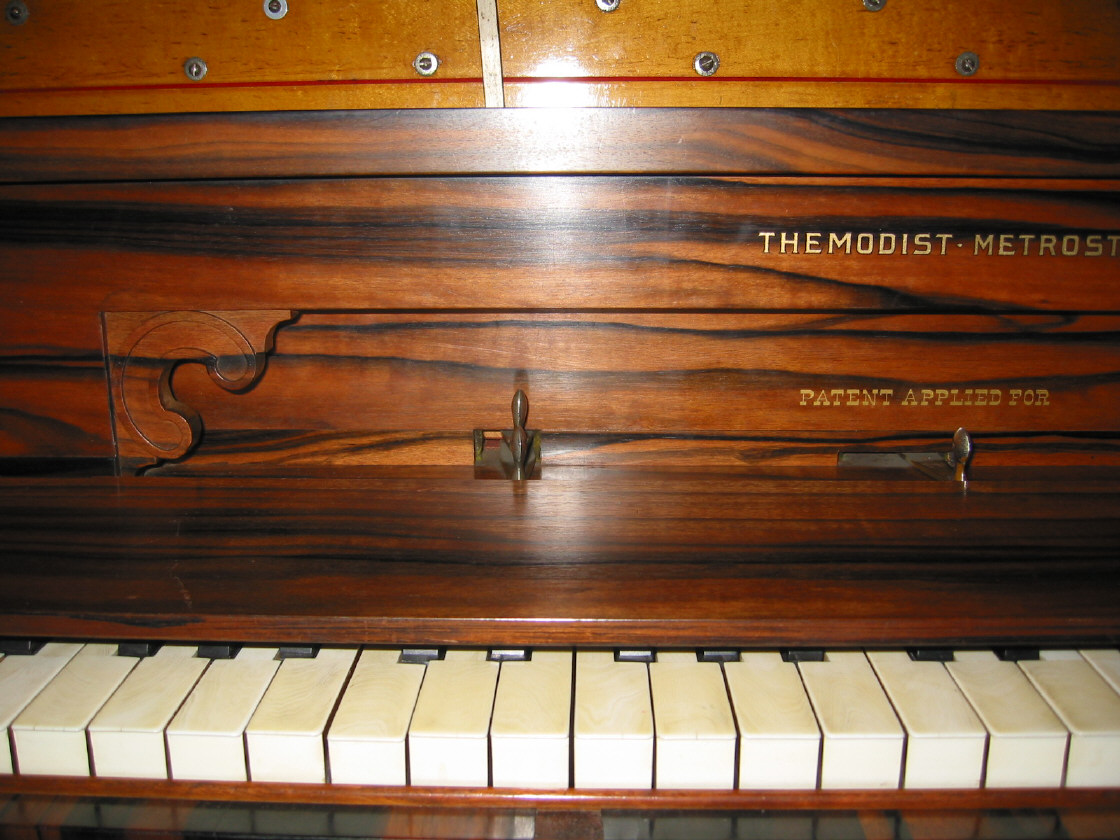
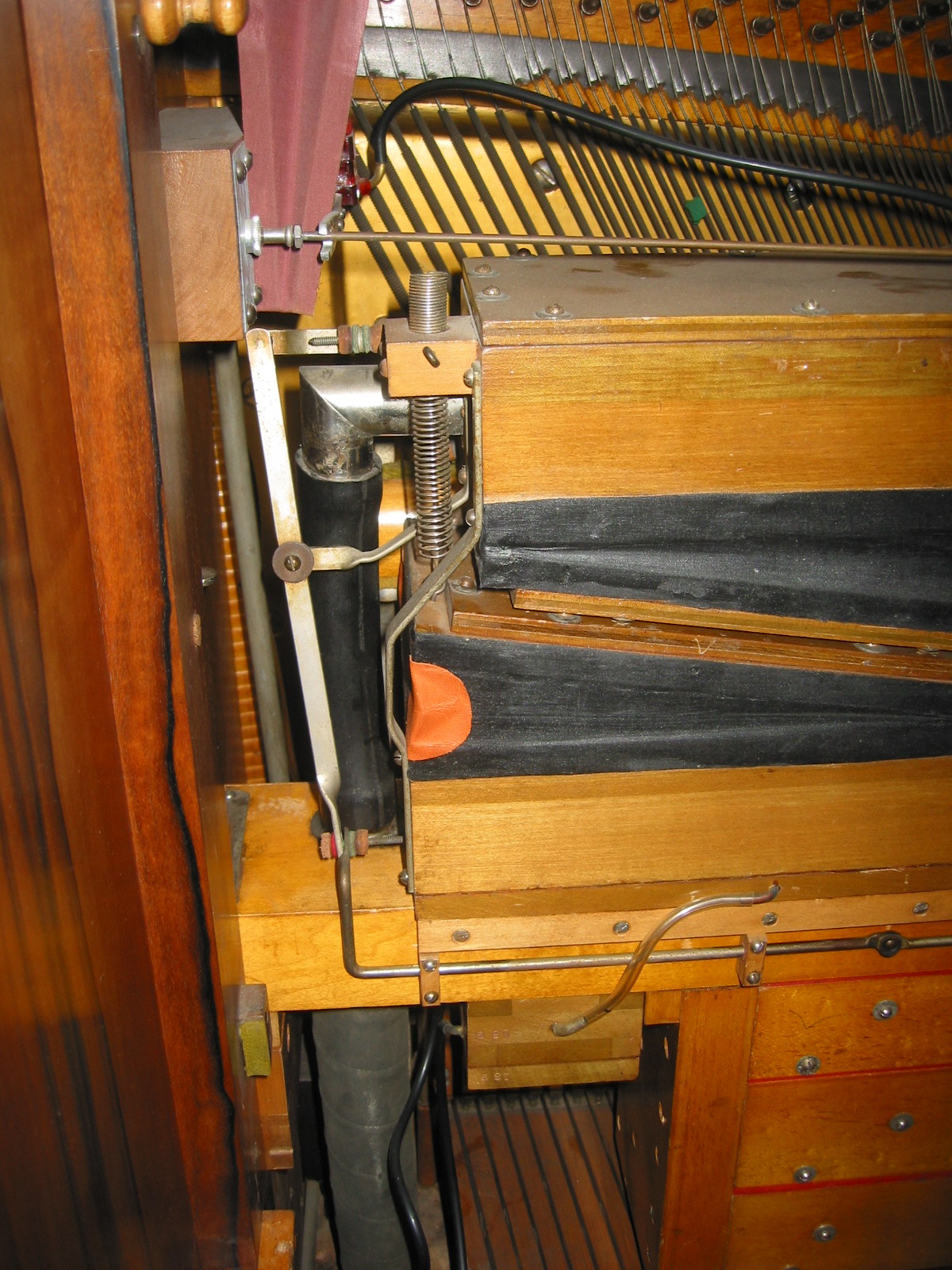
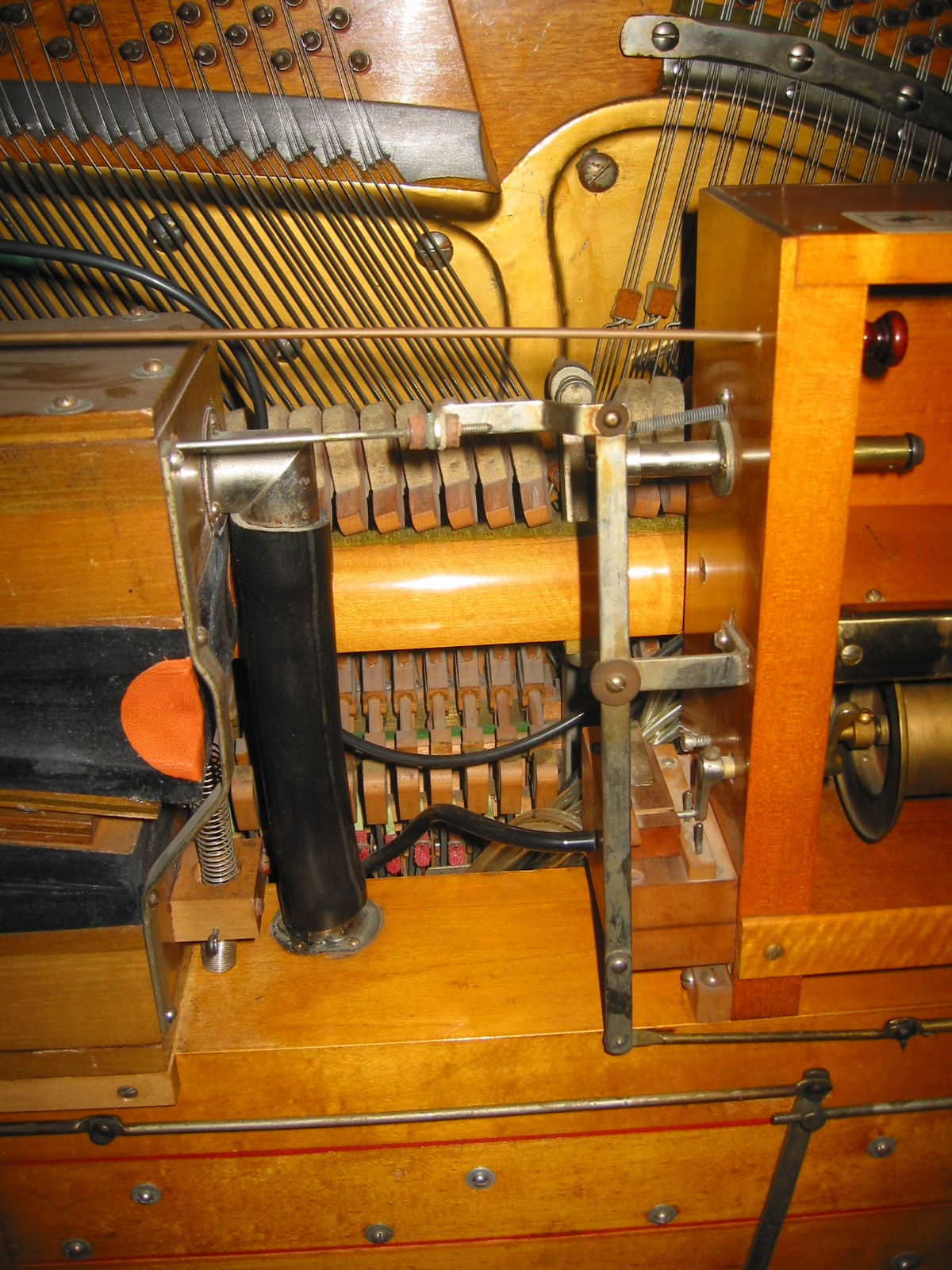
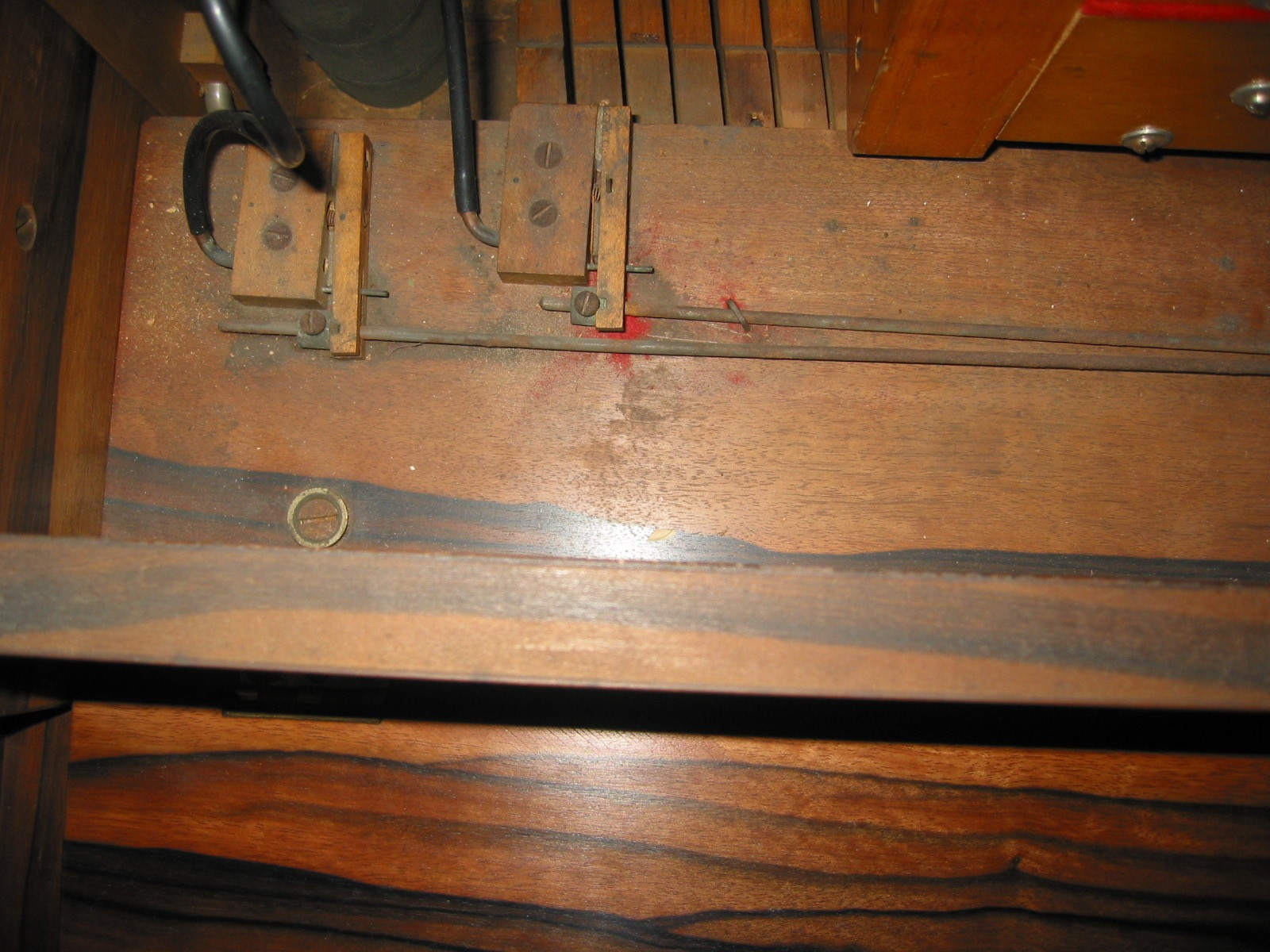
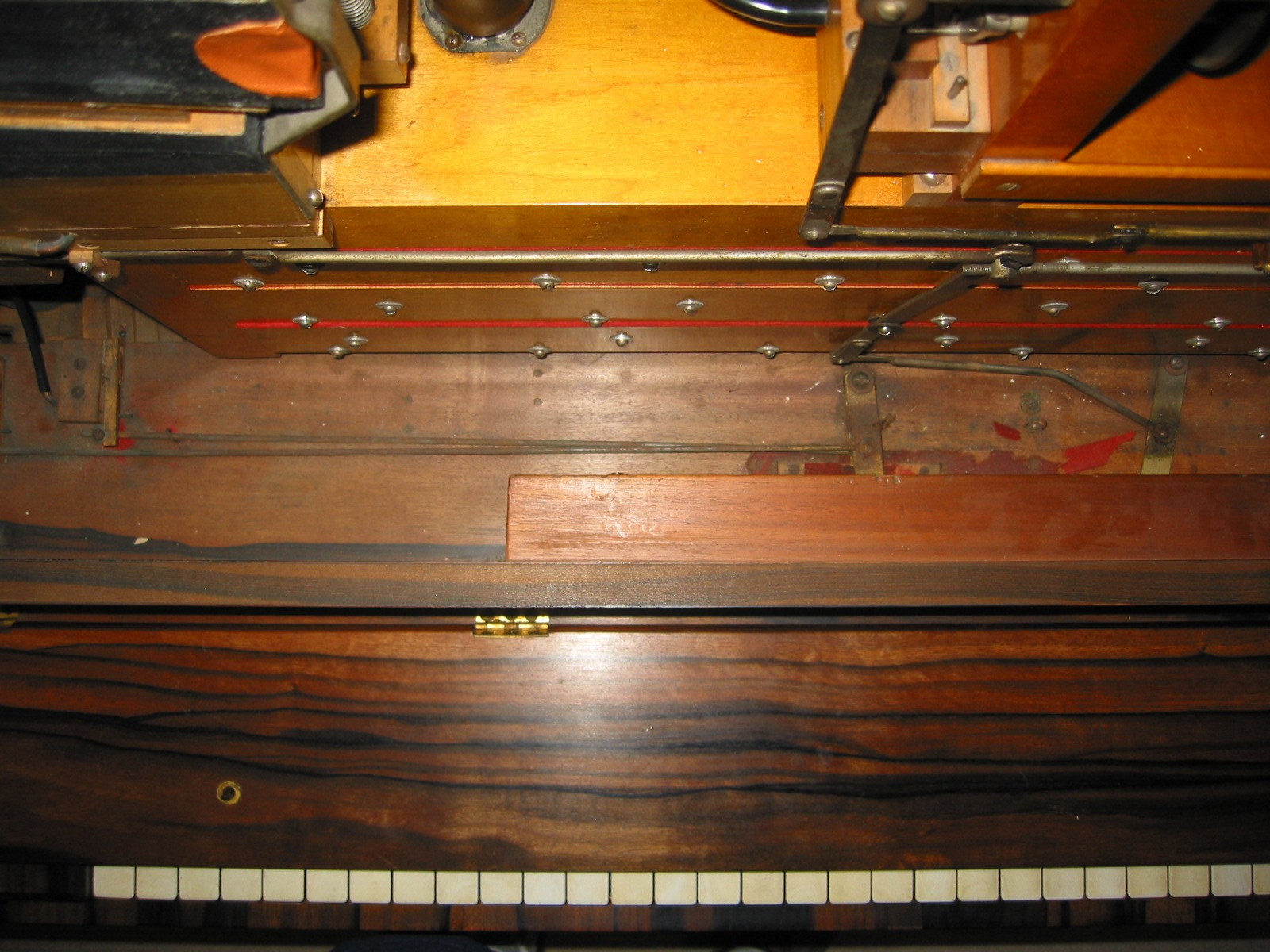
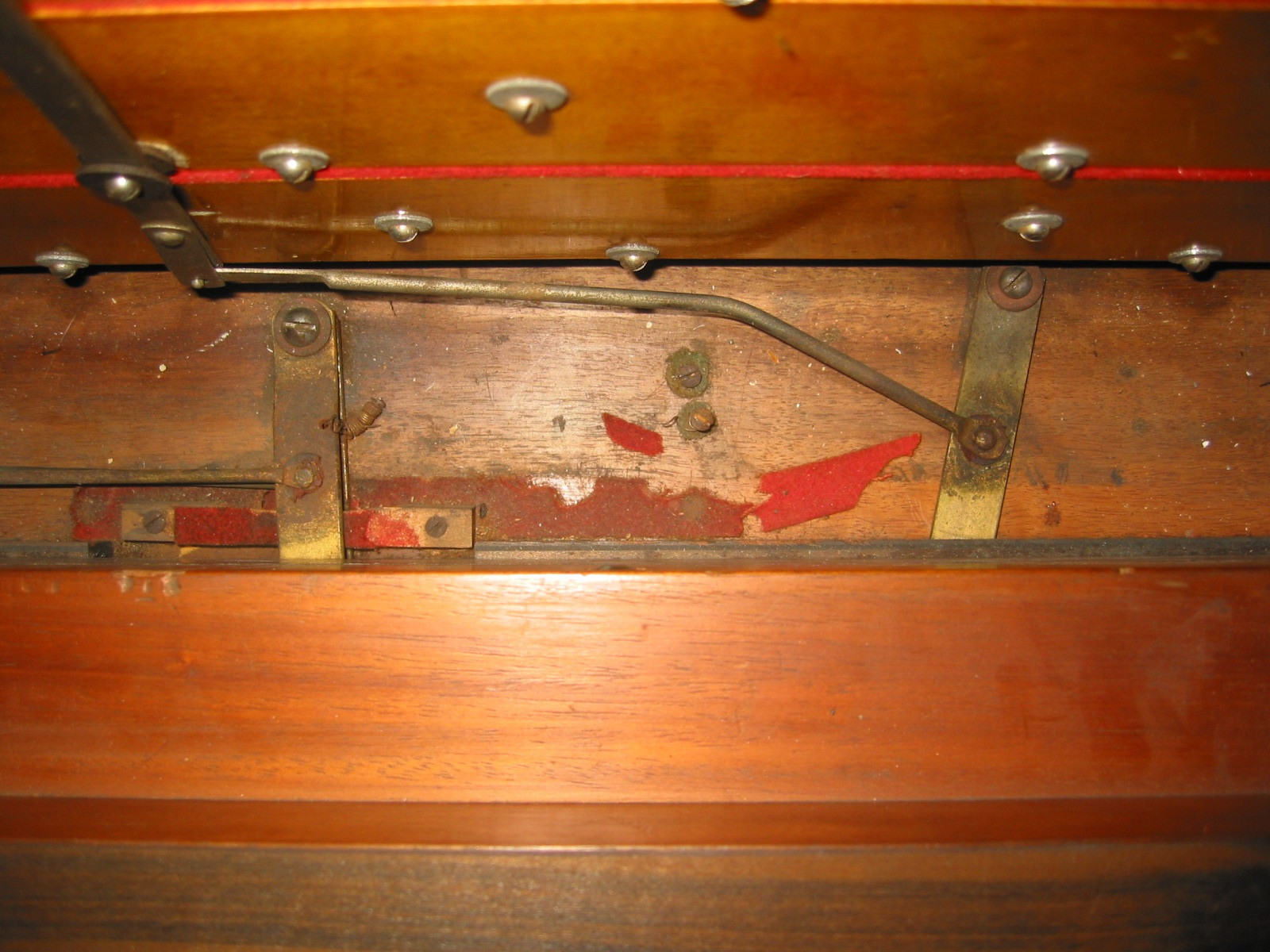

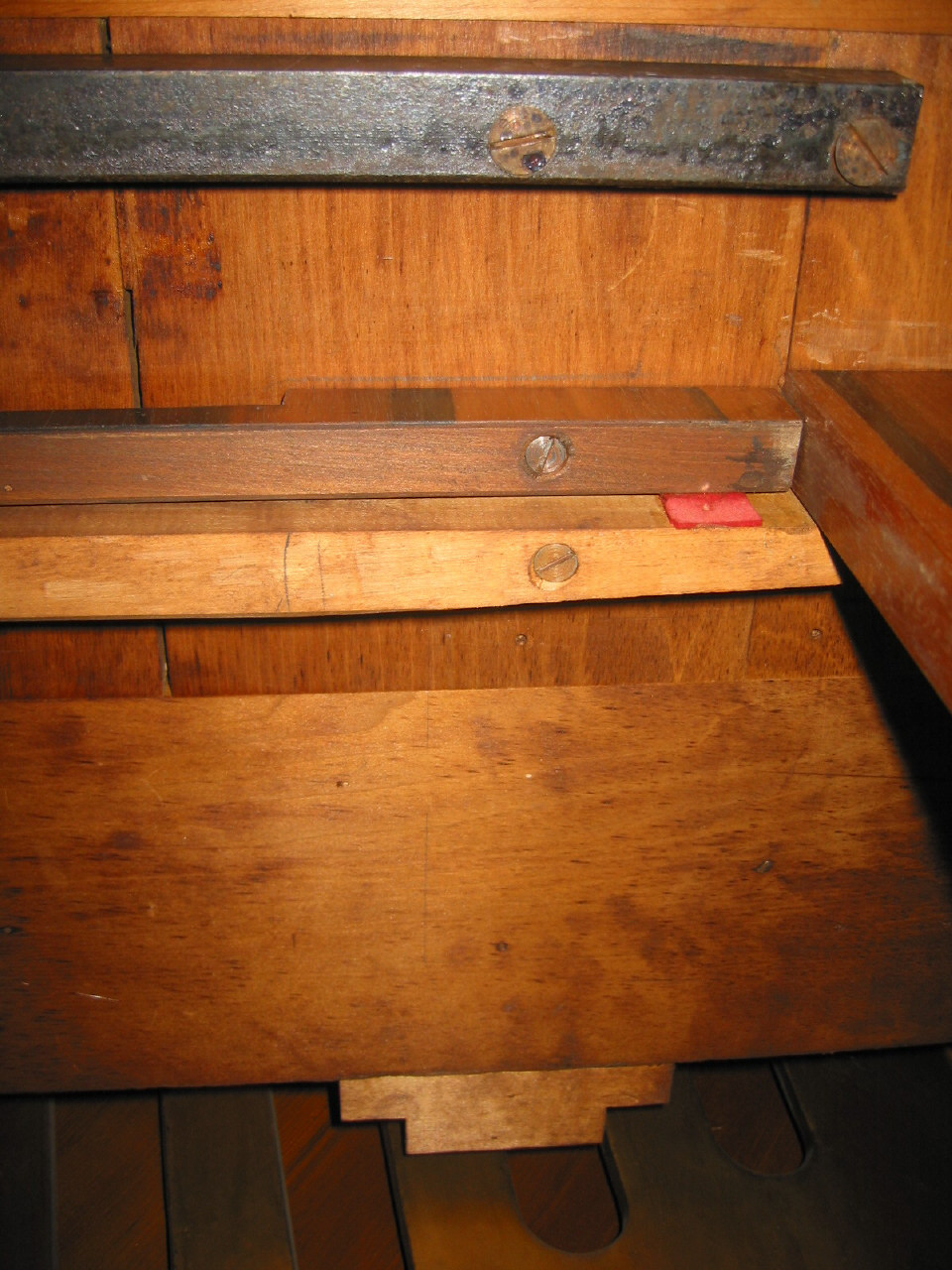
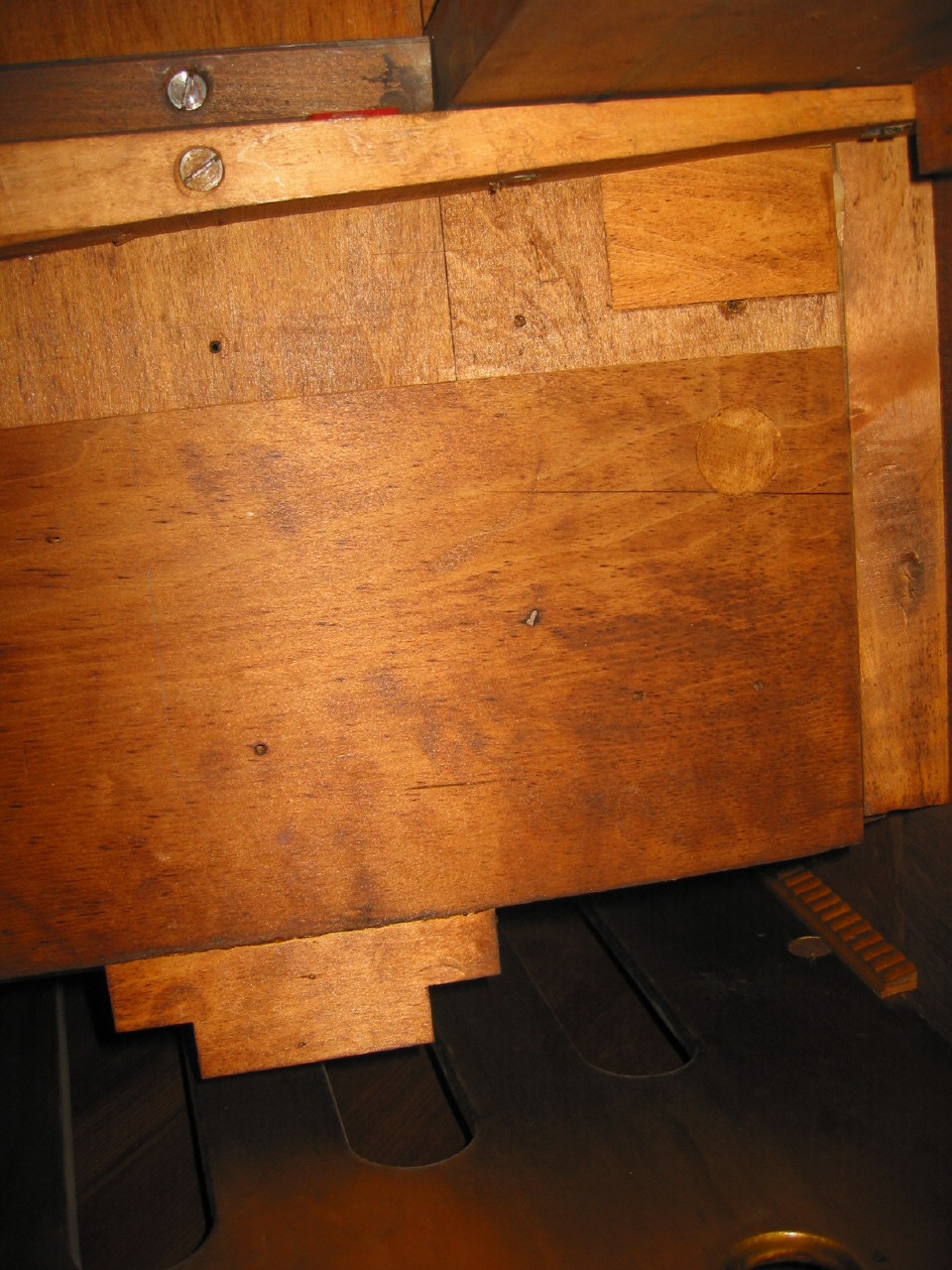
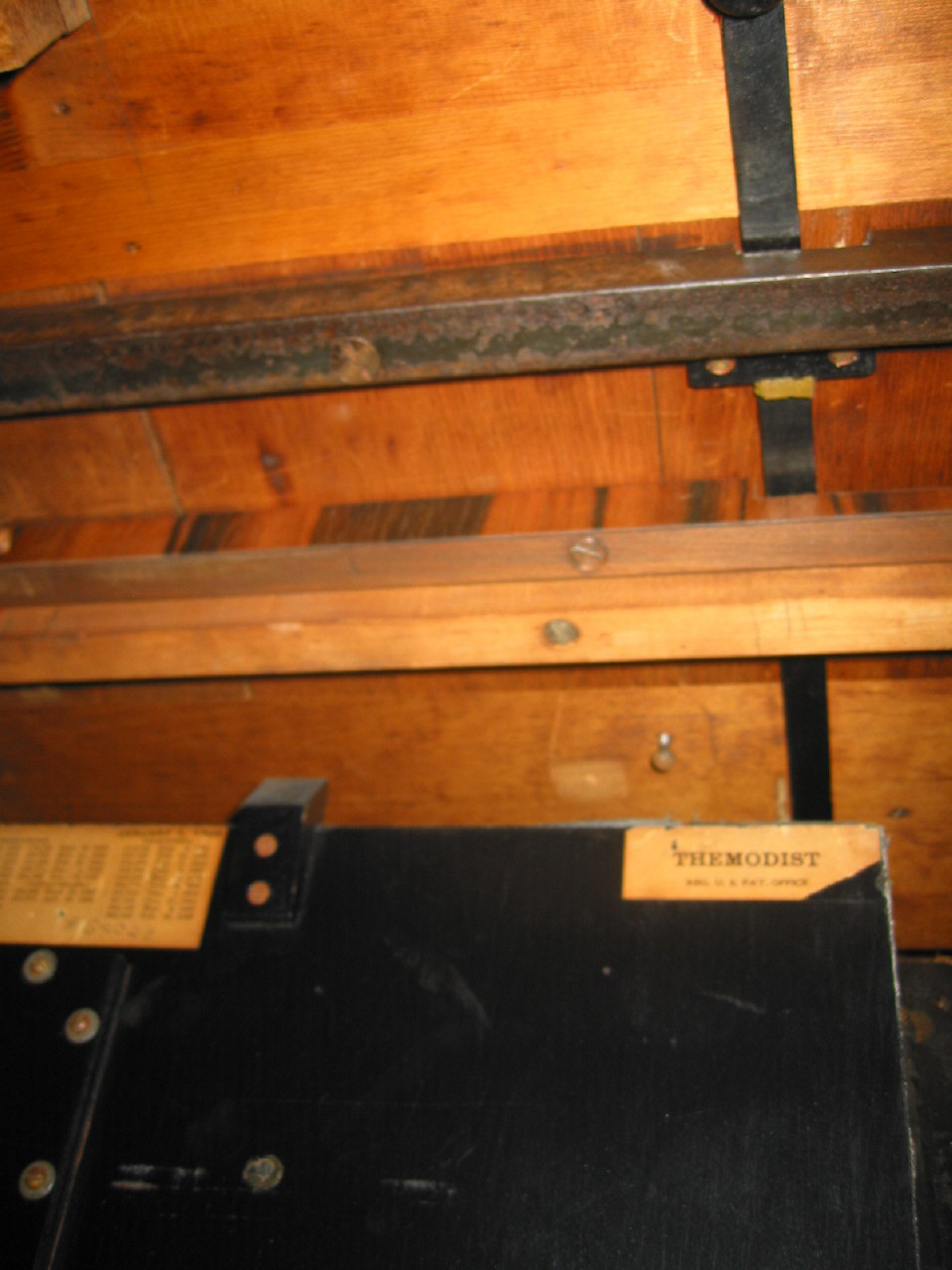
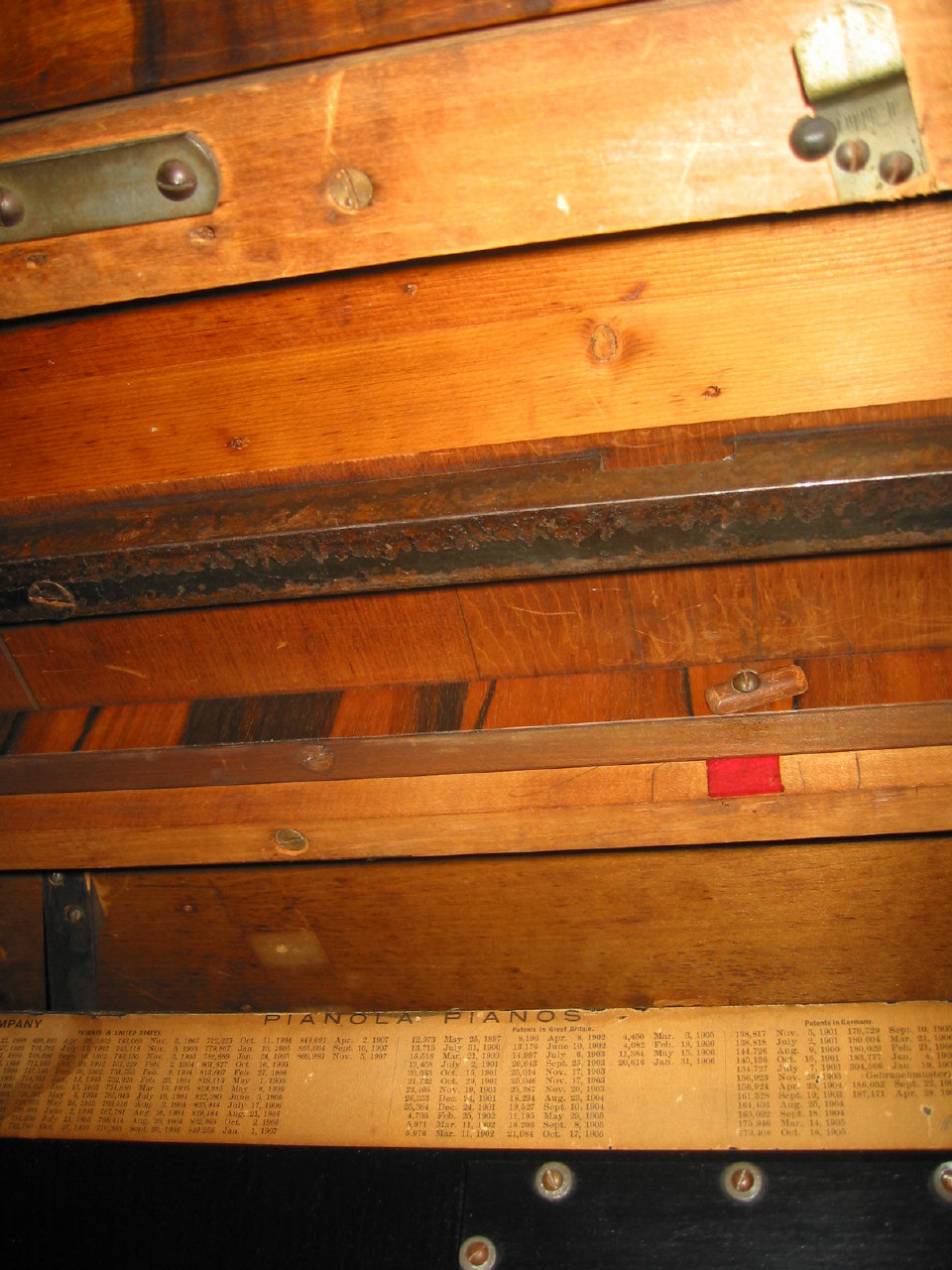
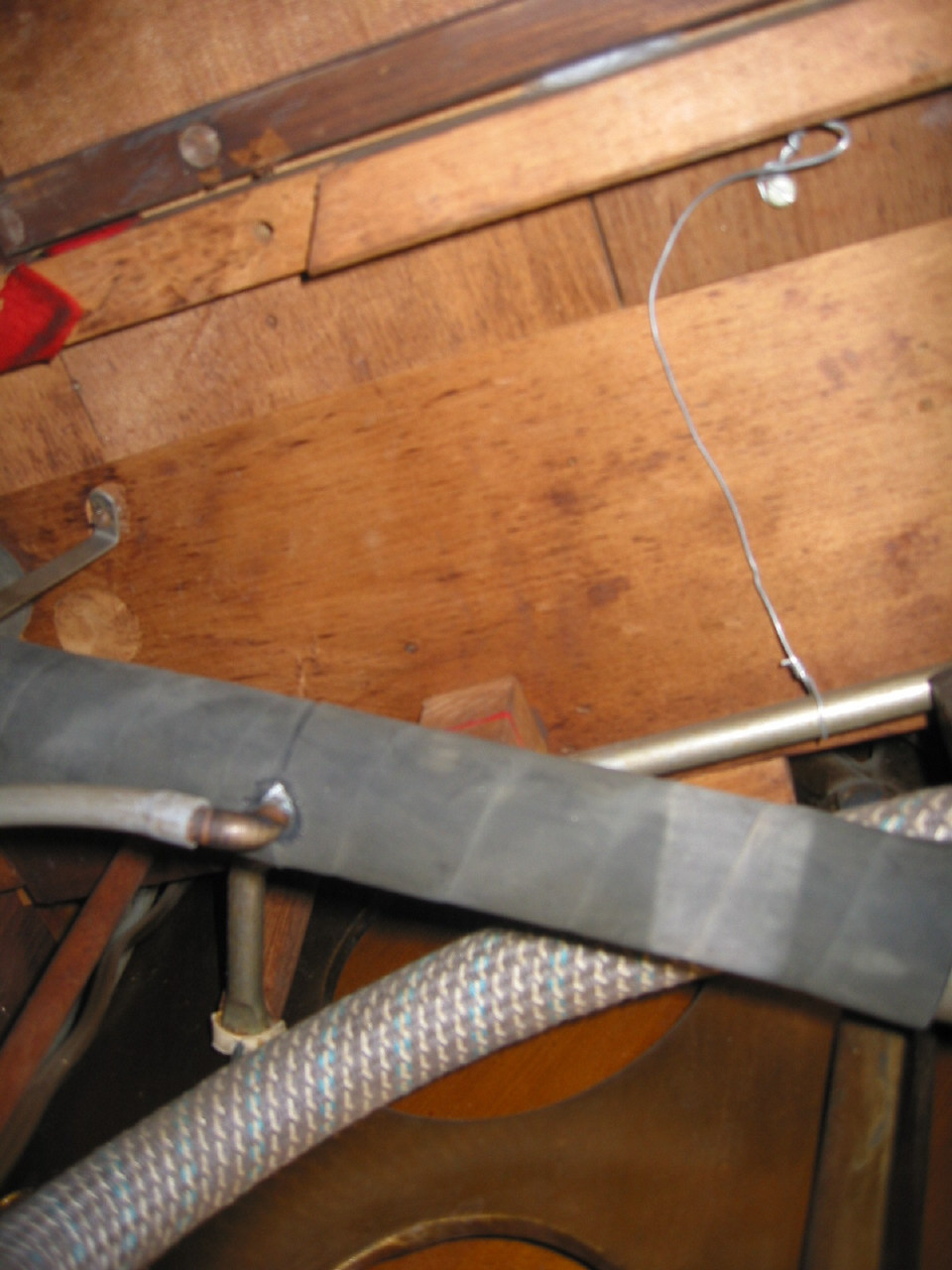
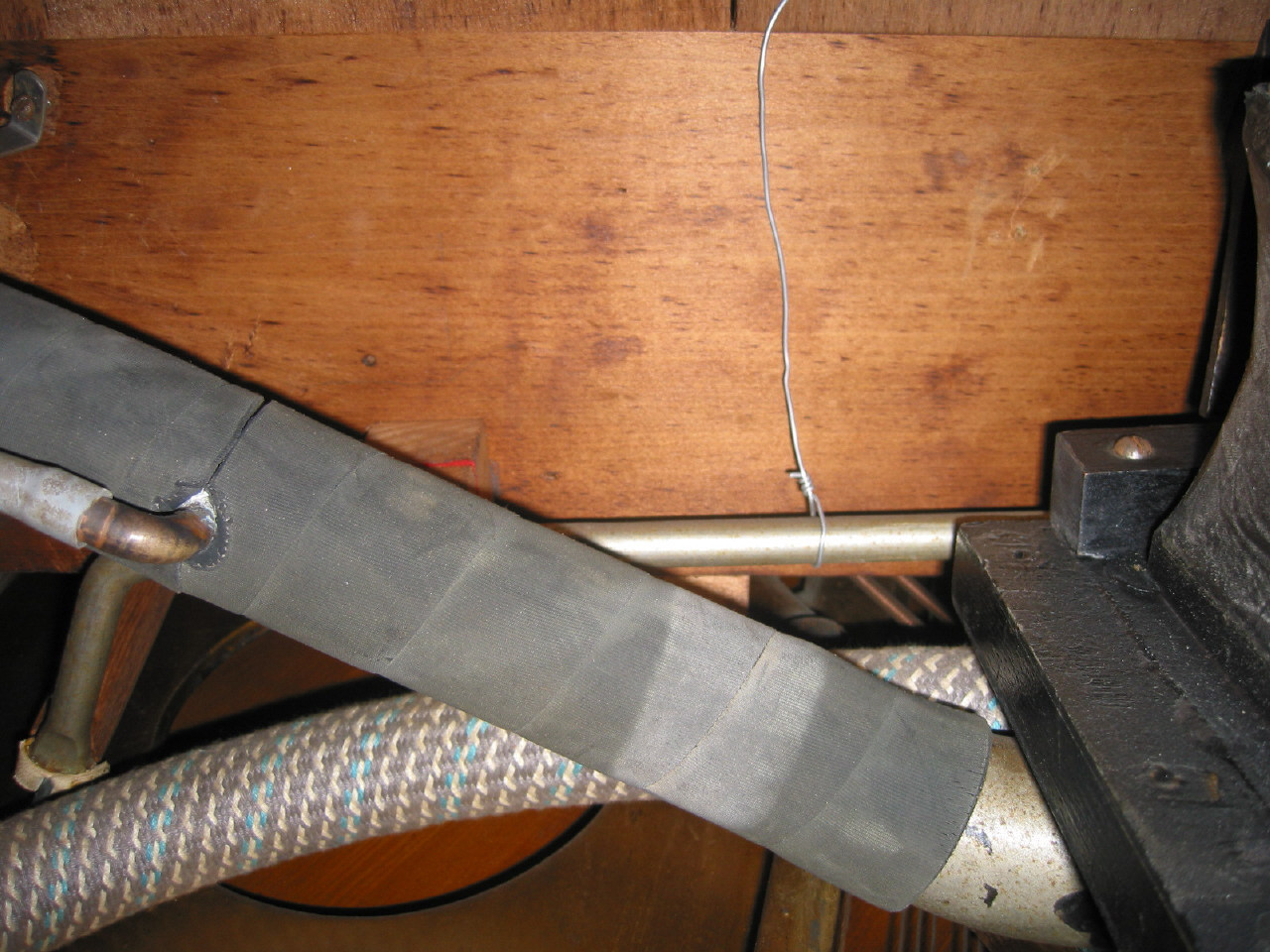
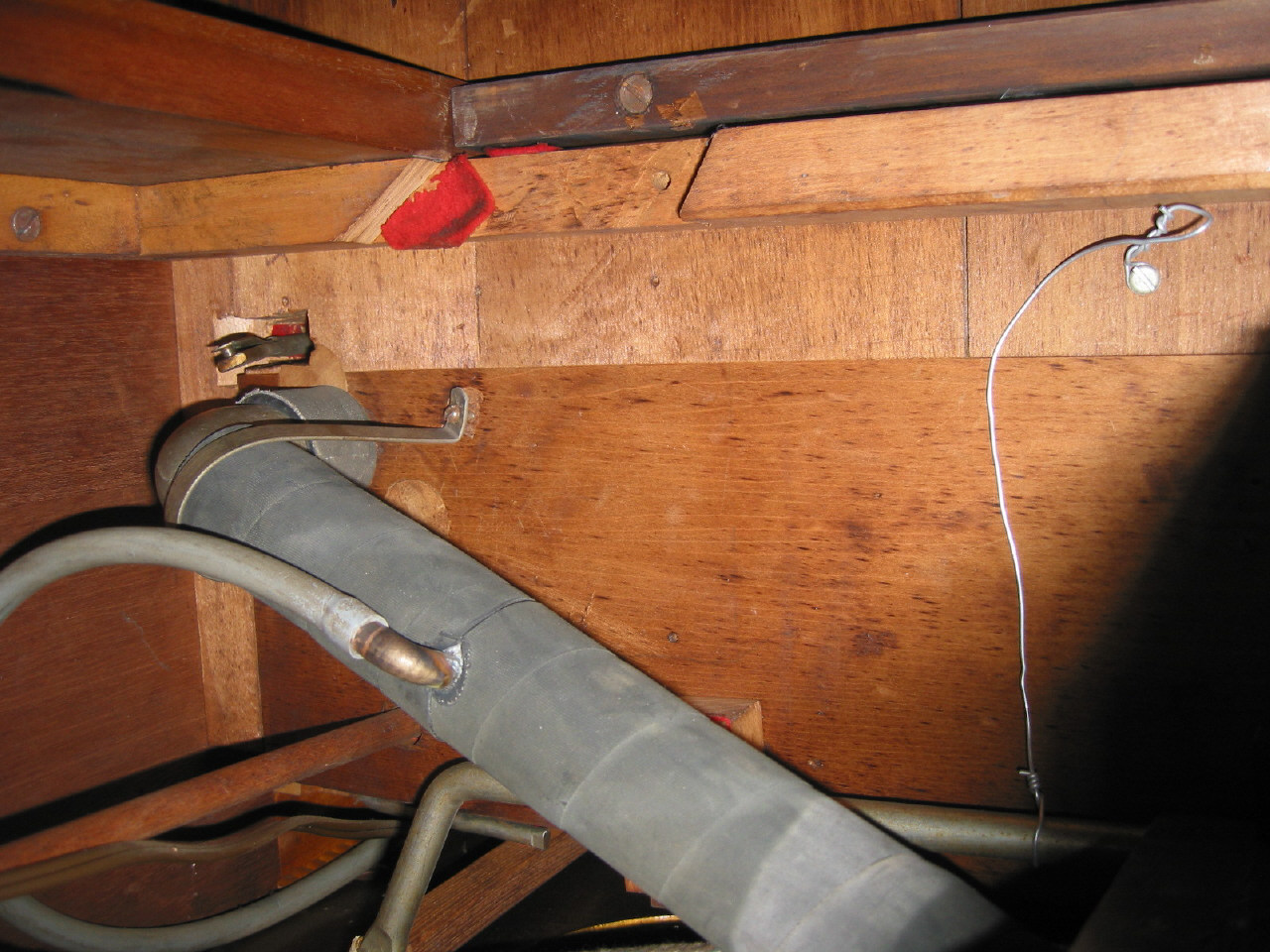
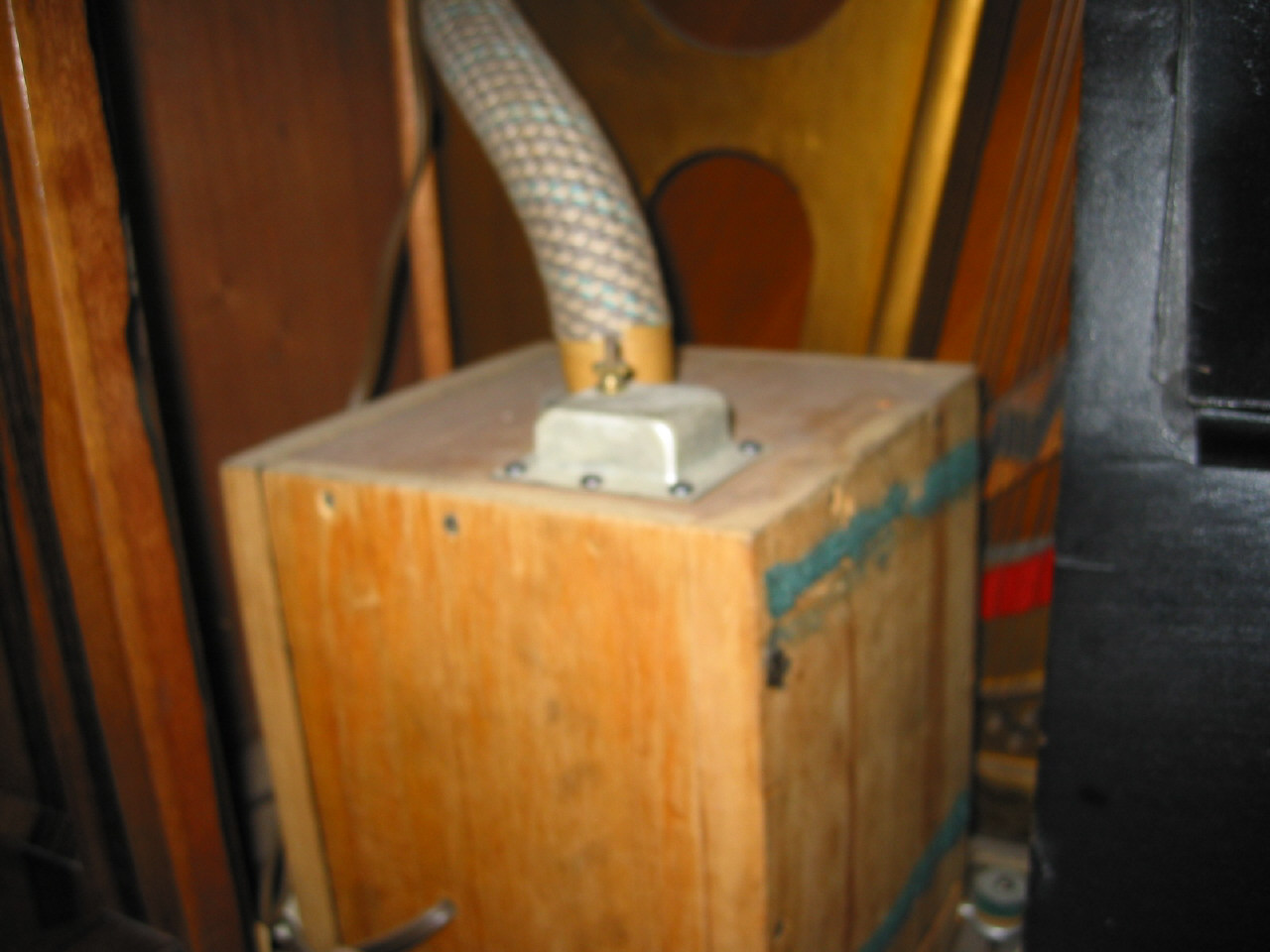
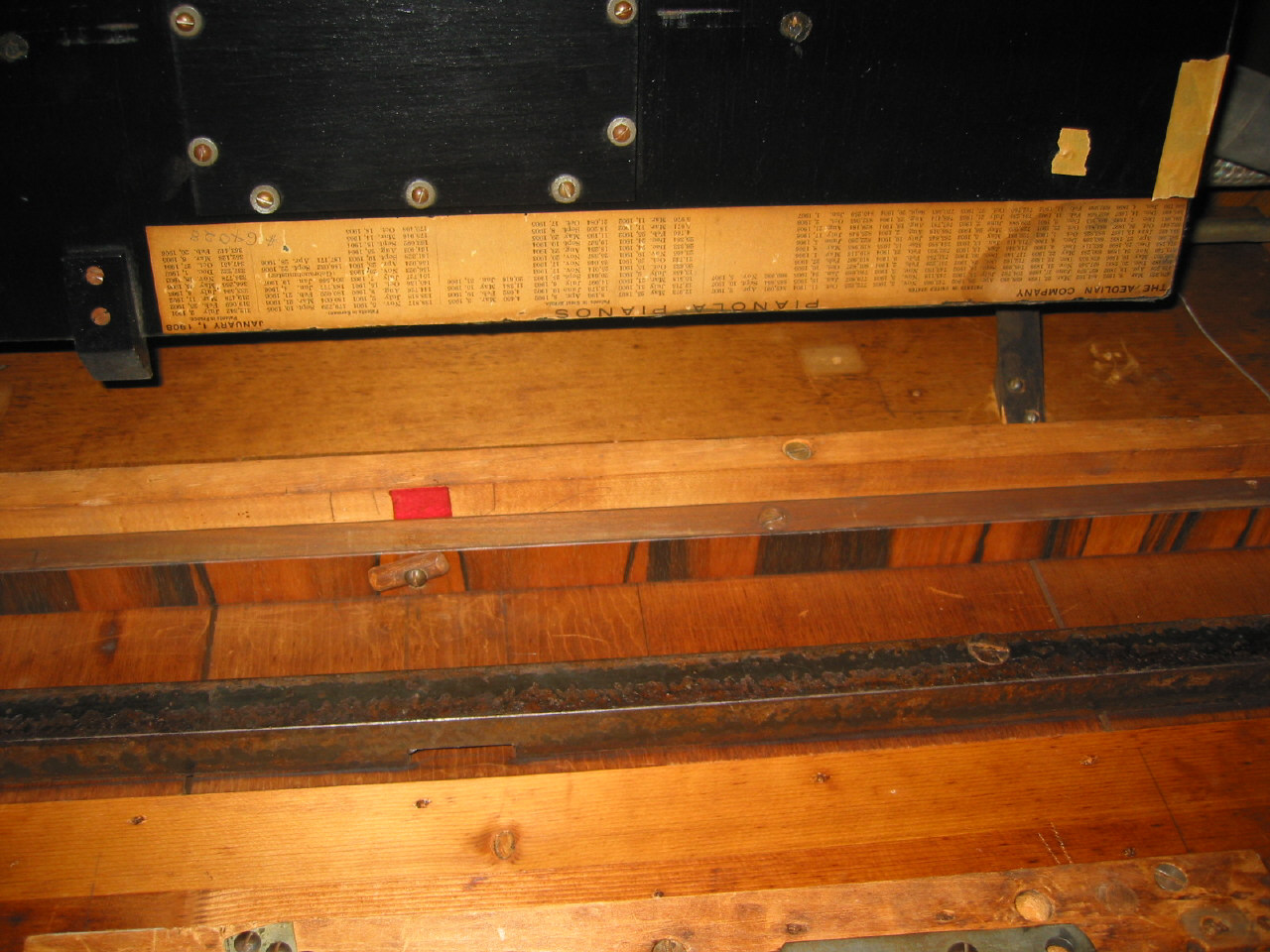
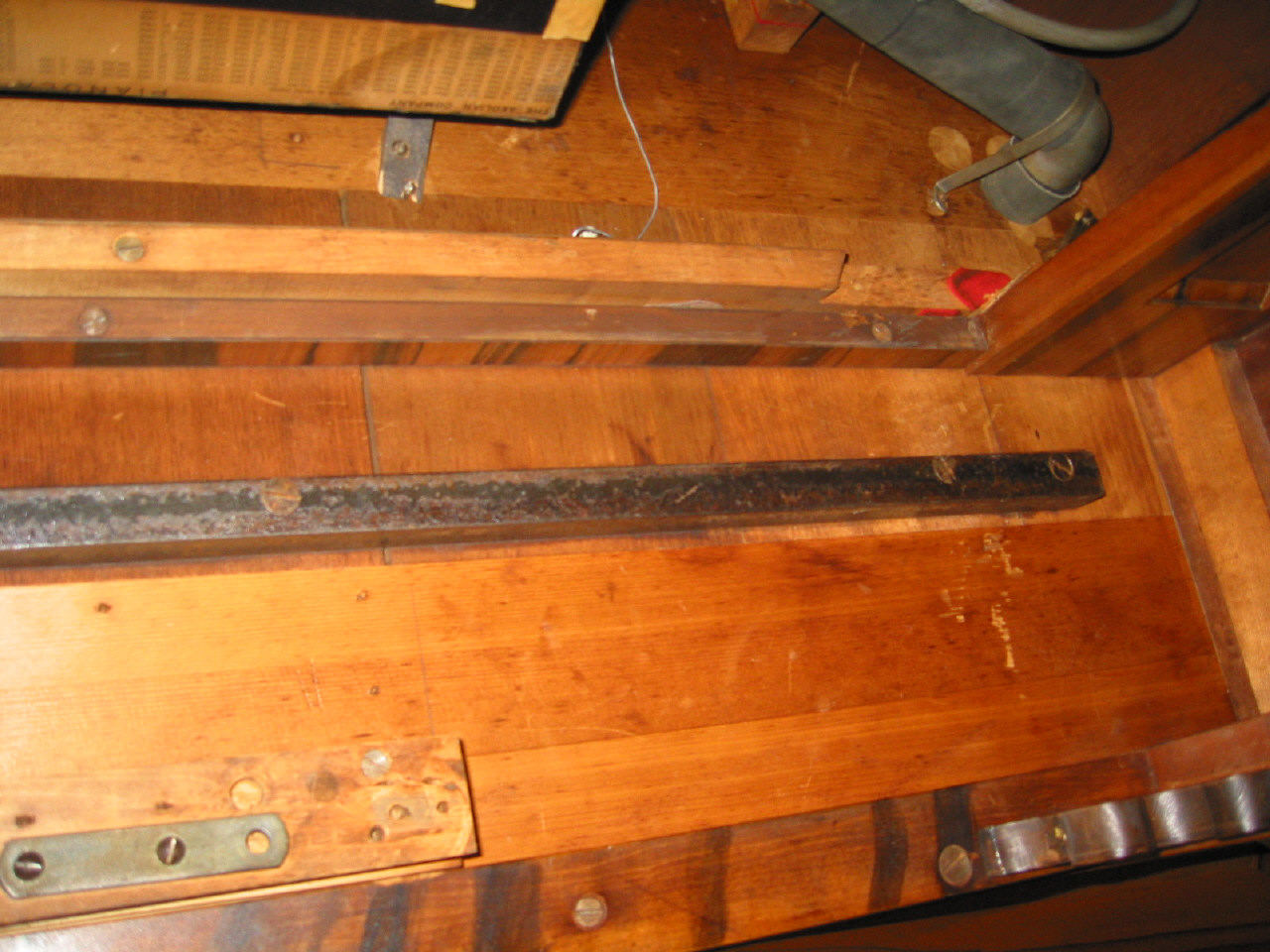
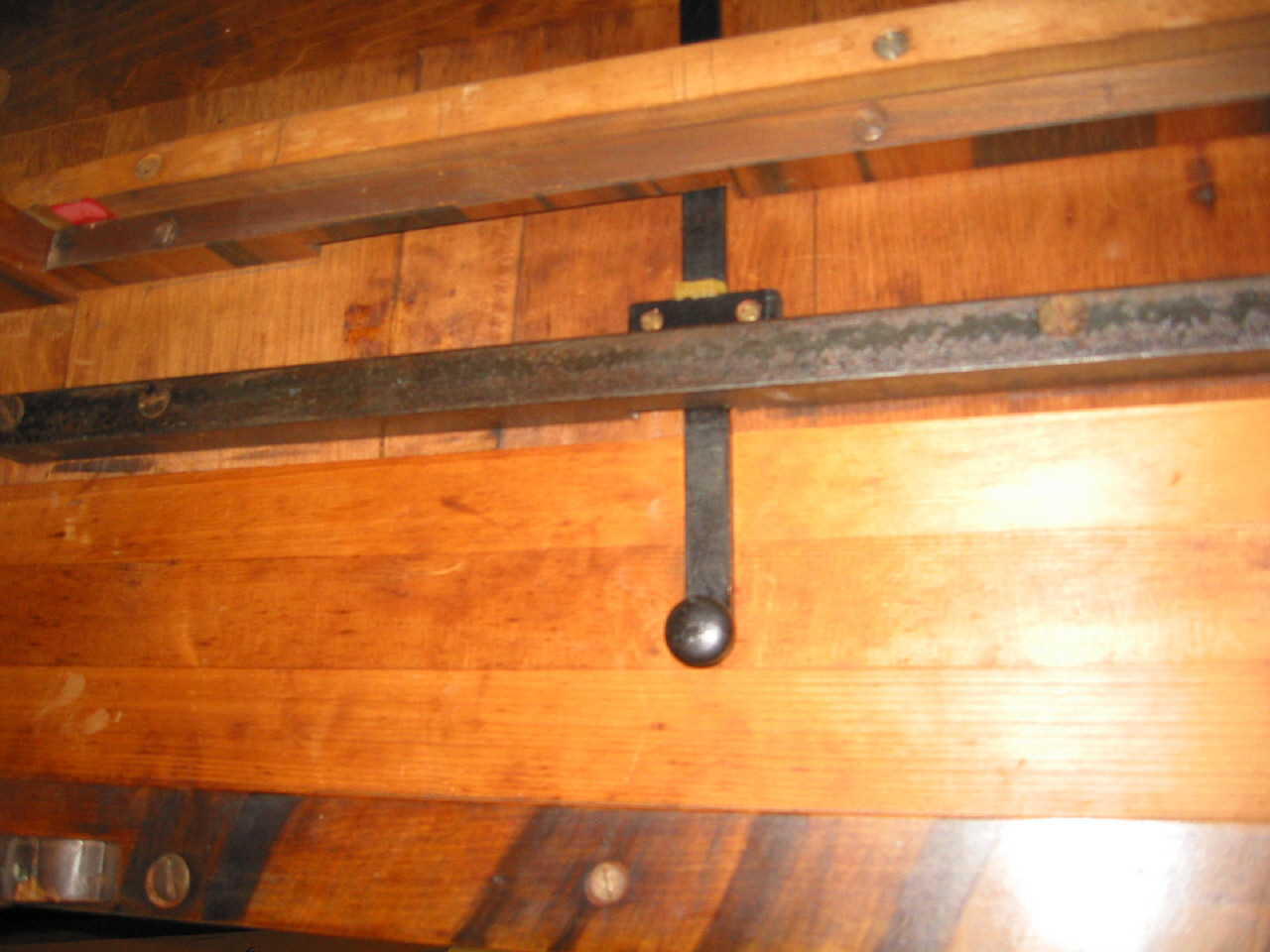
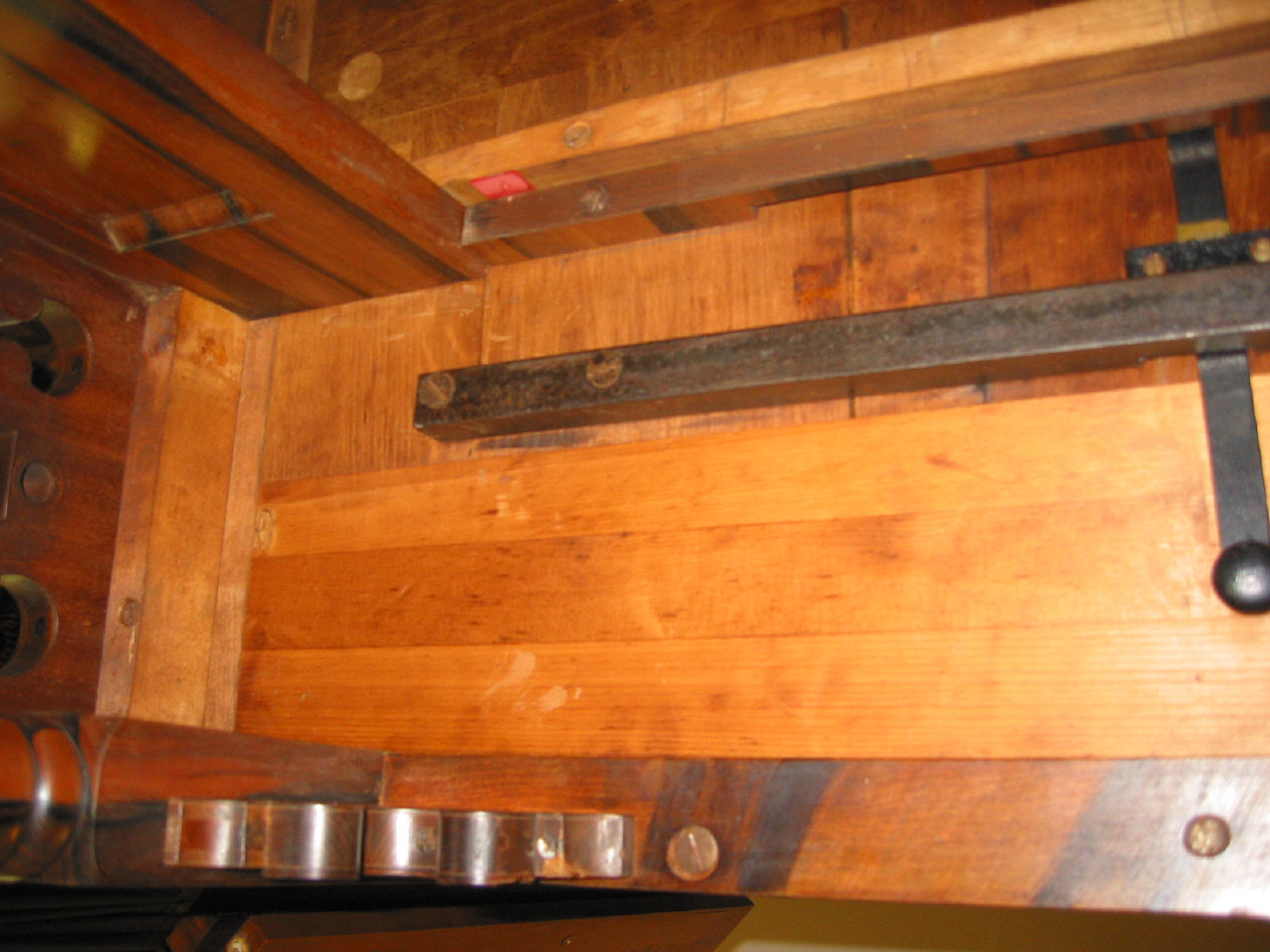
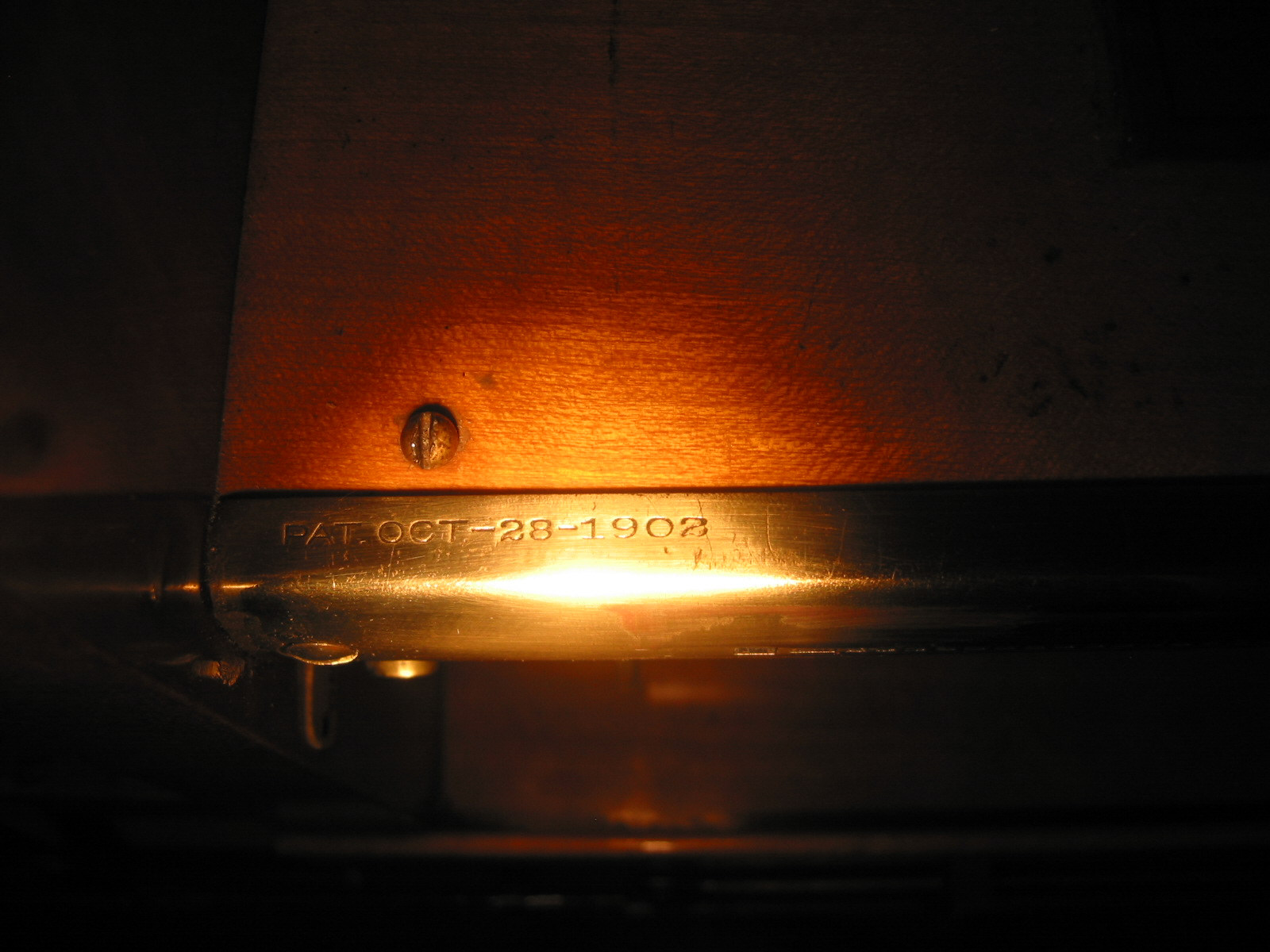
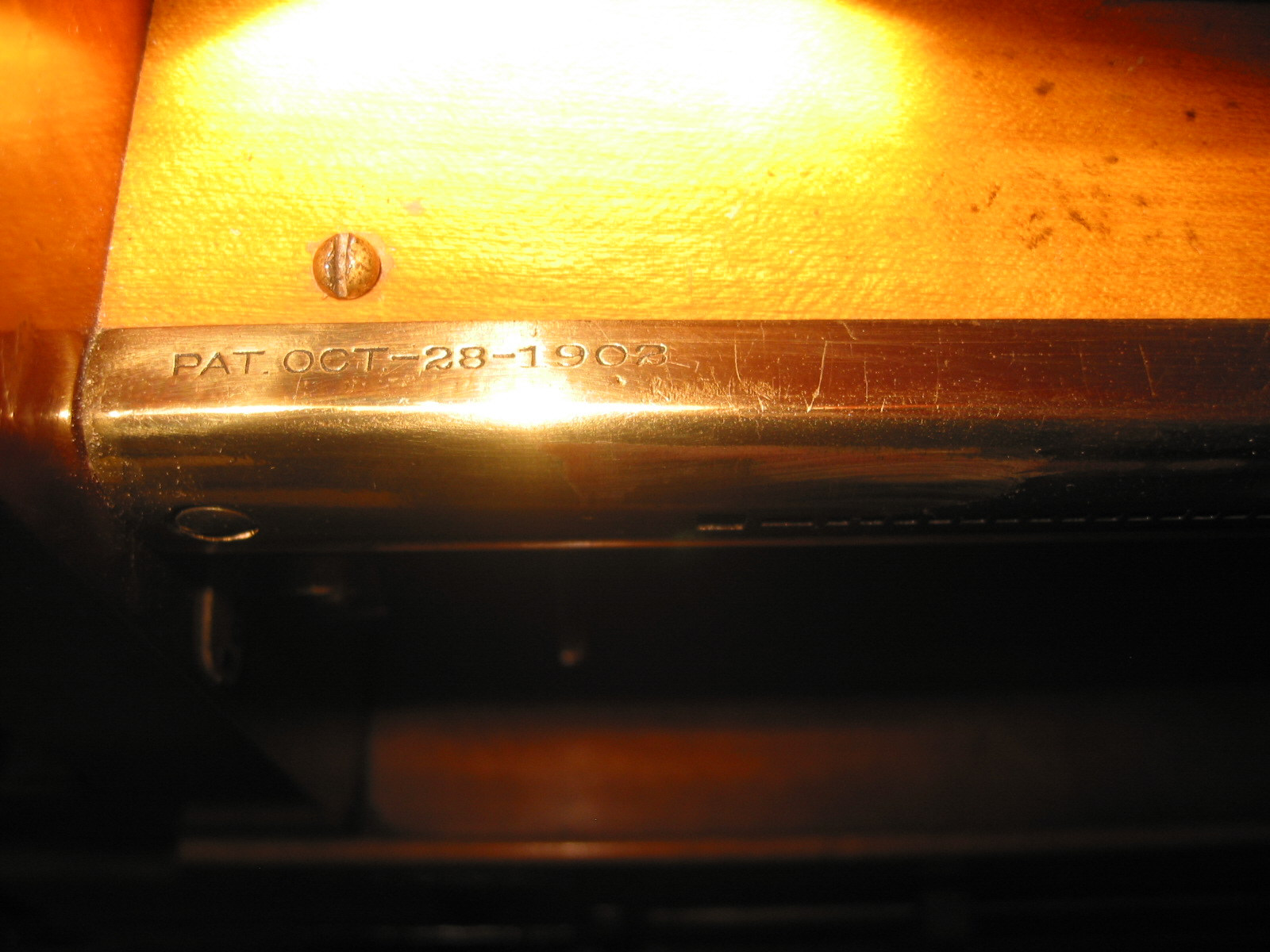
|
The following Comments have been made by members of the Mechanical Music Digest in response to an inquiry that I posted in the MMDigest on October 23, 2006. The authors names have been deleted for privacy reasons. Obviously a European made Weber Themodist. The unstained wood spoolbox is very German like the German orchestrions. The veneer, while in some pics it looks like rosewood, when the whole piano is seen I would have to call it Zebrawood. Very rare, and I would say a special order item. As in a Duo Art the two ganged levers control the snakebites. There should be a lever for theme and accompaniment. Everything in the piano looks like a run-of-the-mill Themodist to me except for the color of the spool box. Good morning John ... that wood reminds me of Mulga (Acacia anu- something) an inland Australian wattle tree. As a kid (40s-50s) I remember scads of mulga wood articles, all with that dark banding and a yellowish heart. The colour might have been tinted but the banding was natural. This site: http://hobbithouseinc.com/personal/woodpics/#letterM doesn't show mulga as I recall it - perhaps all the really big stuff has been chopped down (surprise!). Maybe the guy who runs the site might be able to do better than I can with your pix. Since the machine is 87 yo, the mulga (if that's what it is) was probably the pick of whatever was available then. It's a shame that, whatever the wood, some clown has seen fit to elaborate on it with inlays, however well done, the wood is very busy by itself. I wonder if the player is unusually heavy indicating a hard wood? Perhaps another contender might be River Red Gum (Eucalyptus camuldulensis) from the banks of the Murray River, still cut today, still making burls, but of course in trouble since they need floods every now and then to flower. Anyway, the pictures of RRG on that site don't add up to what I see on your pix. This is a total guess: Camphor Laurel - ring any bells? It should still have a faint camphor smell even after all these years. Hope this helps! Though I do wonder if a northern hemisphere manufacturer would import wood from Australia but then, at that time, it would have been relatively cheap since the folks in those days thought there was an endless supply. I can't help with the technical matters, the the general style of an upright with doors is called a "Manx Piano". The original was designed by architect M.H.Ballie Scott for an early 20th C. commission on the Isle of Man, and it became popular for a while. As to the wood, it looks something like Olive wood: http://www.bethlehemolivewood.net/ which also might explain the slightly eastern look of the piece. I suspect that somebody decided to "fancy up" the case and simply remade it using a Tigerwood from the Philippines called "Pao-Dao," or as we used to call it, just Dao. There are a number of varieties, the most rare being called "Ribbon Dao." That's Dao that looks just like a satin ribbon. I saw this piano on Ebay a year or two (or three) ago, and I wonder if the current owner bought it at that time, or it remained unsold. In any case, the hand levers do not make sense to me; all I can see in the photo are the two "snakebite" accenters, and another lever to the right of that. I would like a photo of ALL the hand levers, looking straight down along the front of the stack, as well as a view from the normal playing position. I suspect that the mystery lever is the manual damper lifter, but I can't be sure from these photos. When I can see all the levers, I will have a better idea of what the heck is going on------- Hi! It looks like a custom case design. The wood is Zebra wood veneer--I have a Victor Victrola XVII that was a custom order made around 1920 made of the same veneer. What a beautiful case. It looks like Rosewood. (I would also guess that the vacuum hose from the pump box is Electrolux.....Ha Ha) Eric Chapeau is a world class expert; he was hired by Steinway a few years back to re-create the greatest of all Art-Cases, the Alma-Tadema Piano. These photos are worth looking at. You can see them at: http://www.yodaslair.com/carmuseum/collectible-almatadema.htm Eric thinks that this is a species of Macassar, probably from the Phillipines since it has a lot of orange in it. I would say with some authority that the 1919 date is way off. My 1910 Weber upright has a serial number of 66507, making this one extremely early. I see nothing to suggest it is of foreign manufacture; note "New York" on the fallboard. It seems to be built the way one would expect an instrument this early to be built: control levers behind the fallboard, natural wood finish throughout the top action, and so on. You will probably find that the stack is double-valve with only 65 notes, the tracker bar replaced with an 88-note one and automatic sustaining pedal device either absent or added later. Also, Weber was using a full iron plate in their uprights by as early as 1914. My 1910 Weber has 4 levers for expression:
Sustaining pedal Soft bass and treble levers must be engaged and Themodist or "ACCENT" switch on in order for the snakebites to have any effect. As with the foot-impelled Duo-Art, Theme intensity is determined by the amount of foot pressure on the pedals. However, Accompaniment level is either fixed or determined by the position of the reservoir. Perhaps the missing parts comprised a mechanical linkage between the accompaniment regulator and reservoir. The piano illustrated on John Tuttle's web site is much earlier than 1919 - more like 1905. This earlier date makes it a great deal easier to figure out. I've seen one other Weber Pianola with the flap at the rear of the keys hiding the controls, which was a 65-note instrument. The illustrated instrument is also a 65-noter, albeit with an 88-note tracker bar! It was not uncommon for Aeolian to make this adaptation in better instruments, these adaptations naturally appearing factory-fitted because that's exactly what they are. Being effectively a 65-note pushup works installed directly into a piano, this instrument is the very earliest form of the Pianola-Piano. Later adaptations shifted the controls to a more rational position in the keyslip so you could see the keys as the instrument played, and also led to the governors moving to the underside of the keybed. This is therefore very interesting to the historian but of low market value in terms of the player action, the value obviously being in the wonderful casework and high-quality piano. Age giveaways are the lack of tracking system beyond a knurled nut in the spoolbox, narrow wind motor boards, having the wind motor governor and Themodist regulator mounted on the top action. Also a giveaway is the colour-coordinated spoolbox, common on 65-note pushups but superseded by black with everything later (I have a pushup where even the takeup spool has the case finish). The 65-note stack can be observed from the gap between the case and end of the stack in one of the pictures. At this date all Pianola construction (i.e. the player action part) was in America, with works shipped overseas as and when required. Aeolian's European factories started with the July 1905 acquisition of the Ernst Munck factory in Gotha, renamed Steck in 1906, and the London Weber factor didn't open until 1910. This piano isn't a Gotha Steck masquerading as a Weber (it's completely different in construction), and too early to be from London, which points to its being American. The use of decals is characteristically American, European instruments inevitably having inset brass or boxwood lettering. The expression system is a straightforward Themodist one, but with pneumatic on/off via pallette valves rather than the more common mechanical slide valves. The case is consistent with the date in the form with the folding doors (the famous Manxman design), but unusual in that it's done with a fancy veneer rather than the fairly austere Oak cases that such pianos normally have as befits their Arts and Crafts backgound. Since the 65-note Themodist rolls and tracker bars have no provision for an automatic sustaining pedal device, it is virtually certain this instrument never had one originally. The linkage described and partially shown suggests a manually-operated lever either missing or intentionally done away with in a later modification. I do have here a piano containing an earlier 88-note "Standard" player action with a button activated pneumatic sustaining pedal device but no automatic sustaining pedal hole in the tracker bar or the usual associated on-off switch. So there is a remote possibility that Aeolian had a similar arrangement for their earliest internal player actions. But I tend to think not, since the logical connection would be via the vertical wood rod connecting the two horizontal steel rods. Since the replacement 88-note tracker bar has a sustaining hole, it is possible that automatic pedaling was added at that time, and then removed to make way for the suction unit. You should check the wood rod for telltale screw holes. |

![]() ..To
The Top of this Page . . . . . . . . . . .
..To
The Top of this Page . . . . . . . . . . . ![]() ..To The HOME Page
..To The HOME Page
|
Since "Player-Care" is an internet business, I prefer that we correspond via E-Mail (click here to fill out the 'Request Form'). However, if I'm not in the middle of some other activity, you can reach me at 732-840-8787. But please understand that during the hours from 8AM-5PM EST (Mon-Sat), I'm generally quite busy. So, I probably won't answer the phone. If you get the answering machine, please leave a detailed message stating the reason for your call. Also, repeat your name and phone number clearly and distinctly. By necessity, I prioritize everything in my life. And, if you call and just leave your name and number, and ask me to call you back, it might be a day or two before I return your call. Why? Because I don't know why you want me to call and I might not be prepared to assist you in an effective and efficient manner. If you leave me an E-Mail address (which I prefer), spell it out phonetically. The more you do to help me, the more I can help you in return. Don't rush. You have four minutes to record your message. |
|
407 19th Ave, Brick, NJ, 08724 Phone Number 732-840-8787 (Voicemail Only, No Texts) |
